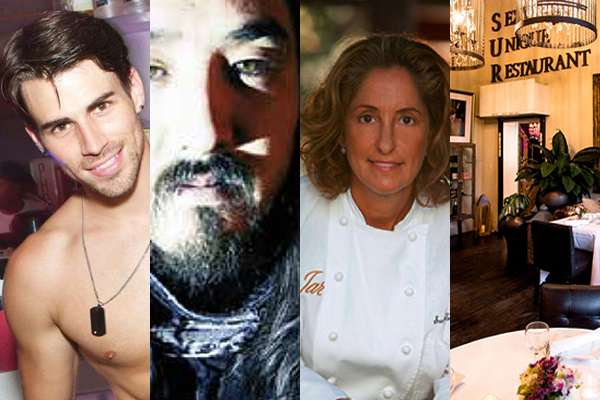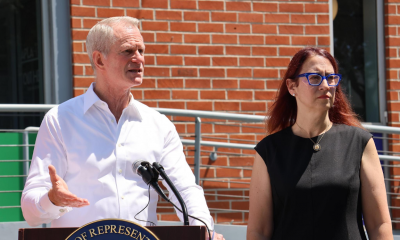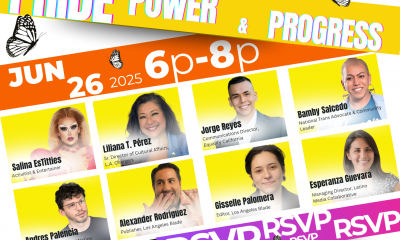a&e features
2018 Best of Gay LA Awards
All of your favorites, from bartenders to activists and more
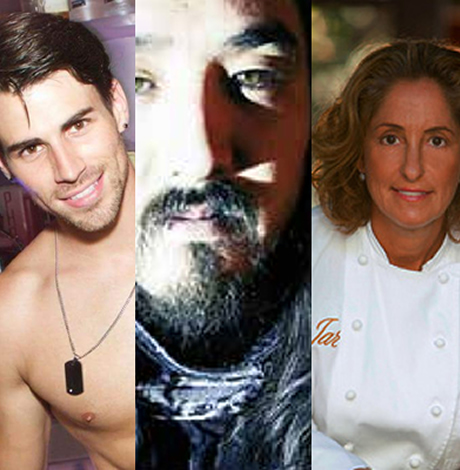
Welcome to the inaugural Best Of Gay LA Awards presented by the Los Angeles Blade. There were hundreds of nominations in 25 categories and thousands of votes. Here we present your picks for the best LA has to offer along with editors’ choices in most categories.
LOCAL HERO: JON DAVIDSON
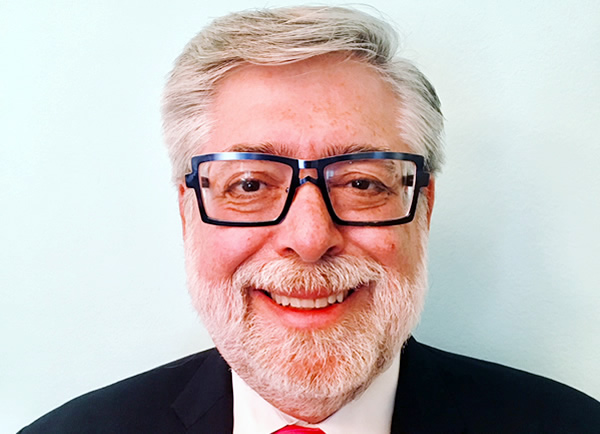
Jon Davidson (Photo courtesy of Davidson)
Jon Davidson has been fighting for the rights of the underdog for most of his adult life.
An attorney focused on the LGBTQ community and people living with HIV, virtually since graduating from Yale Law School in 1979, Davidson has fought and won some of the most important cases facing LGBT Americans. But, as he says, ultimately it’s not whether you win or lose, but how you play the long game.
“What I’ve learned is that one of the realities of doing the LGBT rights litigation that I’ve spent most of my career doing, is that sometimes you can lose the case, but still win. Because those sorts of cases end up educating people about the things that are wrong,” Davidson told the Los Angeles Blade.
He became interested in politics in high school, around the time of Stonewall. He was boycotting grapes and lettuce in support of California farm workers and he protested the Vietnam War. He says he was excited about political change. He started taking cases pro bono.
His first big case was no small potatoes. He sued the city of Los Angeles on behalf of homeless people. Not long after, he says, in 1985 a lot of his friends started to get sick. He started looking for a way he could help.
Davidson teamed up with attorney and activist Susan McGreevy, who was at the ACLU at the time. She enlisted his help in writing the first brief to the U.S. Supreme Court about AIDS. It was about whether people with contagious diseases could be considered disabled and protected against discrimination under a law called the Rehabilitation Act of 1973. The goal was to convince the courts that AIDS was a disabling condition.
“At the time, the Reagan administration was arguing that contagious diseases couldn’t be considered disabilities because that would mean that people with AIDS would be protected from discrimination,” Davidson says.
Another local case got a lot of attention when Davidson was working with a gay rights organization that no longer exists, on behalf of a man threatened with eviction for hanging a gay Pride flag off his apartment’s balcony. The building’s argument was that people would think it was a “gay building.” Davidson argued that people put American flags on their balconies, so why not a Pride flag?
Davidson left private practice in 1988 to work for the ACLA of Southern California. He was there for eight years, and then joined Lambda Legal, where he worked for more than 20 years.
It was Davidson’s work on a case against the Boy Scouts of America that brought much national acclaim. He was the lead lawyer on the Curran v. Mount Diablo Council of the Boy Scouts of America, a case that went to California Supreme Court. He lost the case, but it was part of the fight to get people to understand that the Boy Scouts were engaging in discrimination.
Davidson also helped out on the Dale case, in which the U.S. Supreme Court held that the constitutional right to freedom of association allows a private organization like the Boy Scouts, to exclude a person from membership when “the presence of that person affects in a significant way the group’s ability to advocate public or private viewpoints.” In a 5-4 decision, the Supreme Court ruled that opposition to homosexuality is part of BSA’s “expressive message” and that allowing homosexuals as adult leaders would interfere with that message. It reversed a decision of the New Jersey Supreme Court, which had determined that New Jersey’s public accommodations law required the BSA to readmit James Dale, who the BSA expelled after Dale went public about being gay.
Davidson says despite losing those cases, the suits against the Boy Scouts outed the organization as discriminatory and ultimately led to a lot of pressure on them to change their position – both social and financial pressure.
“I used to joke that I’ve spent the bulk of my career fighting for LGBT people to serve in the military, get into the Boy Scouts, serve in the Los Angeles Police Department, and to get married, but I didn’t want to do any of those things. But those are four of the most conservative institutions we have in this country and they all in many ways epitomize being an American citizen,” Davidson says.
He and his longtime partner celebrated their 13th anniversary this year, which they count from the time they moved in together.
“I believe that an attack on any member of this nation or the world is an attack on all of us. But I decided more than 30 years ago I wanted to put my professional energies into and work on behalf of my community, which I define as the LGBT community and those living with HIV. That’s what spoke to me and where I felt there was a need,” he says. But, he adds, “A big part of the battle is also to remember that our community also includes several other groups who’ve been targets of the Trump administration – poor people, people of color, Muslims, people from other countries, you name it – it’s frightening. Our community needs to address the fact that many of the gains we made didn’t really help those most marginalized in our community.” (REBEKAH SAGER)
BEST BARTENDER: ANTHONY SALDANA
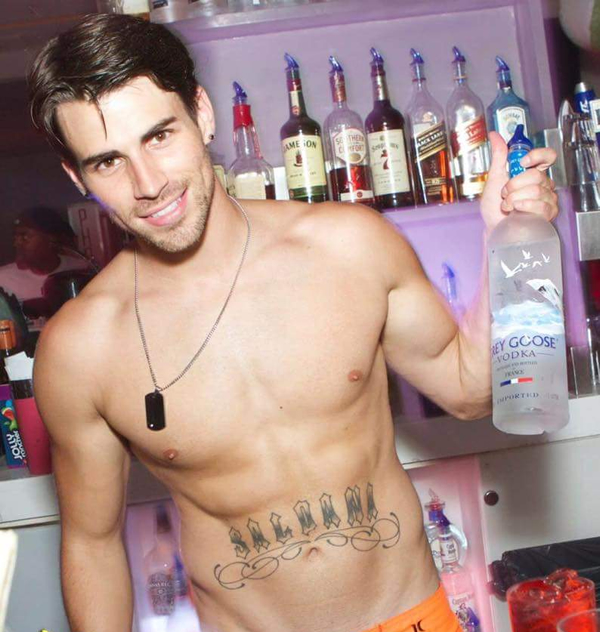
Anthony Saldana (Photo by Brett Saari Photography)
He prefers to be called a bartender rather than a mixologist, but Anthony Saldana is Micky’s top man behind the bar.
“We are more fine-tuned for speed and agility than mixing fancy drinks, because it’s always so busy,” Saldana told the Los Angeles Blade.
Born and raised in Ontario, in the inland empire, Saldana has lived in LA for the last 10 years, and worked at Micky’s for most of that time.
His first job after finishing UC Riverside was at Target as an executive manager. He says he was making $70,000 but on his first visit to Weho, a friend came running out of Micky’s with his shirt off, and told him they were hiring.
“I went in and spoke with the manager, who tore my shirt off in the office. He takes one look at me, and says I can start Monday. I told him about my Target gig and what I was making. He laughed at me and said I’d make double that,” he says.
Saldana waxes poetic about the days before the straight crowd discovered Weho.
He explains that straight guys come in to hit on drunk girls, but they don’t drink as much.
Trained using YouTube videos, this is the fourth year he’s won a Best Bartender title. In 2013, Grindr awarded him Best Bartender. He was flown to Vegas to receive the award.
“I don’t know why I keep winning, because I’m kind of an asshole,” he admits sheepishly. He adds, “If you come into my bar, and you act shitty I’m going to call you out on it. I’m very protective of my customers. I’ve jumped over the bar and thrown people out. I take shots with all of my customers. They literally love it.”
Saldana left home at 17 to “do his own thing.”
Now fairly distant from his family he says people don’t get to choose to be born into a family. “I want to choose who I love. I don’t want to be forced to love people I don’t even get along with. I travel a lot, and I take my friends wherever I go.”
His family found out about his being gay via social media. He almost married a girl. He has some complicated views on being gay, and says he gets pretty deep with customers about them all the time.
“I was born a straight man. I was in love with this female, it wasn’t until my sophomore year I had my first gay experience. I think as a child something very small could alter your thought process. I feel like the gay community always says ‘oh, you’re born gay,’ but if 10 percent of the community is born different than the other 90 percent, then that would make it a disability. I would hate to think that being gay is a disability. Personally I don’t want to be thought of as born gay… But, I’m gay now.
“I definitely appreciate a beautiful female though… and have this girl Natalie in my life that I call my wife. We’re inseparable and we do everything together, and I swear she would get married in a heartbeat, but sexually I just can’t do it. I associate with being gay,” Saldano says.
Single and dating, he has a staunch rule about never dating customers. He’s pressured a lot by men, and says he’s had to tell people he’s straight because it’s easier than telling men he’s not interested.
Despite turning a few guys away, Salgado gets gifts — lots of them. At Christmas he received a Cartier love band worth $10,000. “I mentioned that I’d always wanted one, and the next thing you know it’s getting screwed on my wrist,” he says. He’s been given a Mercedes, taken on trips, and even had someone give him money for his sick father.
“I mean people will give 10 to 20 percent to a church, whereas in the gay community they’ll give 20, 30 or 40 percent to the bars,” he says.
Although he’s known by the tattoo inked on his flat stomach, complete with washboard abs, the days of bartending shirtless are over.
A gym rat, Saldano says to keep his liver from completely failing, he only does shots of tequila, and his favorite is Don Julio anejo – always with a slice of orange. (REBEKAH SAGER)
MICKY’S
8857 Santa Monica Blvd.
310-657-1176
BEST BARTENDER, EDITORS’ CHOICE: CORY ZWIERZYNSKI
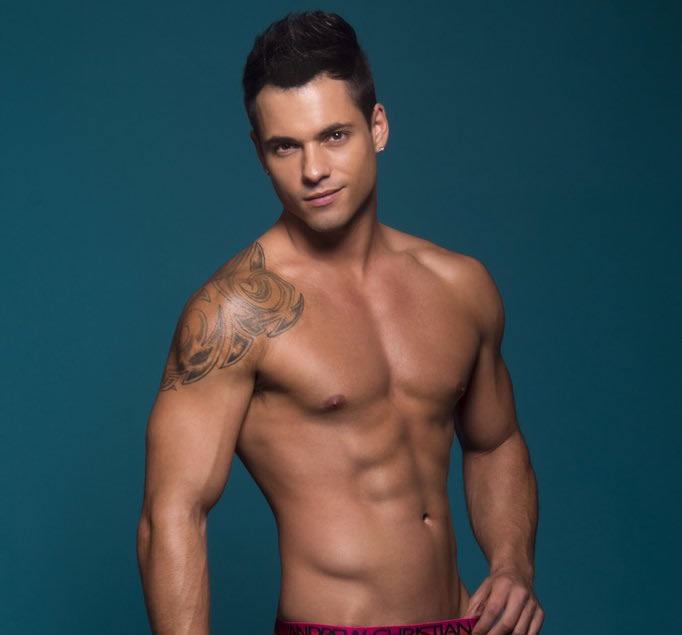
Cory Zwierzynski (Photo courtesy of Zwierzynski)
Bartender and star of “What Happens at The Abbey,” Cory Zwierzynski is the editors’ pick for Best Bartender. For nearly 25 years, The Abbey has dominated gay nightlife in West Hollywood. And Cory is almost as famous, thanks to his starring role on “What Happens at The Abbey.”
“When you start working at The Abbey,” Corey told the Los Angeles Blade, “it’s like joining a big family. We don’t just work together; we have a good time together. We have so many regulars at The Abbey that they are all part of the family too.”
Corey’s favorite moment at The Abbey so far? “People dancing to Diana Ross’ music on the dance floor with Diana Ross. It doesn’t get more memorable than that.”
THE ABBEY
692 N Robertson Blvd.
310-289-8410
BEST DJ: STEVE AOKI
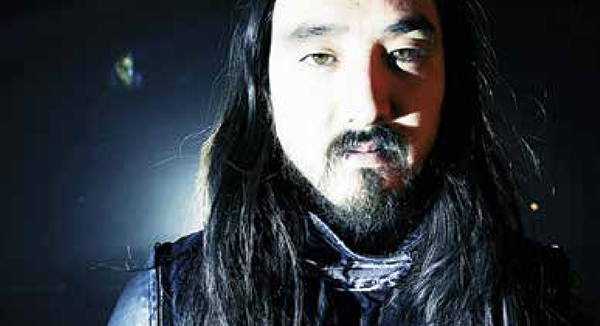
Steve Aoki (Photo courtesy of Aoki)
Steven Hiroyuki (Aoki) is one of the world’s most influential DJs. He certainly has the whole EDM circuit world jumping at venues around the world. But he’s really just an ordinary guy who grew up Newport Beach and attended USCB.
He holds degrees in feminist studies and sociology. But while in college, a spark captured his imagination when he produced a do-it-yourself record and began running underground concerts at Isla Vista, a section of residential land adjacent to UCSB. The venue became known as The Pickle Patch and it changed Aoki’s life.
In his early 20s, Aoki built his own record label, which he named Dim Mak – a reference to his childhood hero, Bruce Lee.
Aoki has won and been nominated for a number of industry awards, both in annual competitions and in magazine rankings. In 2007, he was named Best Party Rocker DJ by BPM Magazine, Best DJ of the Year by Paper Magazine, and Best Set of the Season at the Ibiza Awards. Several years later, in 2012, he was named #15 in the Top 100 DJs in DJ Magazine, and was named America’s #2 Best DJ. Also in 2012, he won an
EDM Effect Woodie Award by MTVu, and the following year he was nominated for his first Grammy.
In 2014, Aoki was awarded two Guinness World Records, one for the “longest crowd cheer,” and also for the “most amount of glow sticks for thirty seconds.” Aoki performed at the 2015 Ultra Music Festival in Miami Beach on May 21. He also earned the Guinness record for “most traveled musician in one year,” with 161 shows in 41 countries in 2014.
To say he has been successful is an understatement.
He is the founder of the Steve Aoki Charitable Fund, which raises money for global humanitarian relief organizations and medical research. In 2015, he was named Global Ambassador for the Best Buddies program, a non-profit devoted to young people with developmental and intellectual disabilities. Learn more at steveaoki.com
BEST DJ, EDITORS’ CHOICE: SHANE IVAN NASH
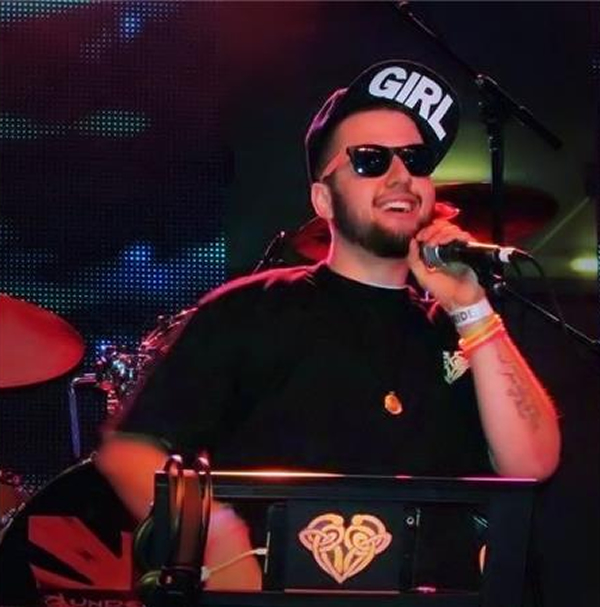
Shane Ivan Nash (Photo courtesy of Nash)
As a transgender activist and talented musician, Nash has consistently shared his story and his music, helping to inspire others. When asked what he loves most about DJing, Nash said, “Your profession requires you to party, dance and create a collected consciousness. The nightlife is the release from life—we’re all on the same beat, in the same moment.”
Of his work with the LGBT community, Nash said, “I’ve helped countless people in the community start their endeavors including Trans Chorus LA and as a board member for LA Pride, I fought for the trans representation.” Learn more at ShaneIvanNash.com.
BEST CHEF: STUART O’KEEFFE
If you haven’t heard of chef Stuart O’Keeffe, then you clearly haven’t been invited to the right A-list Hollywood dinner parties.
A small town Irish hottie, who now lives in West Hollywood, O’Keeffe made a name for himself on the Food Network’s “Private Chefs of Beverly Hills.”
“I was always obsessed with America and always wanted to be on TV,” O’Keeffe told the Los Angeles Blade.
His first gig in the U.S. after culinary school in Ireland was in Napa Valley working at Meadowood Napa Valley. But restaurants didn’t suit him. He says he didn’t like the way people were treated.
“I knew I was destined to do what I wanted without the stress. I thought there must be another way, and I kind of started doing dinner parties in my apartment for friends, and they’d tell people about them. I was also working as an executive assistant, and started getting hired for private parties.
O’Keeffe can’t talk a lot about who he works for, but will mention a few celebs he says have “eaten at his tables” – stars such as Sharon Stone, Jennifer Aniston, Justine Bateman, Harrison Ford, Cindy Crawford, Jane Fonda and Christina Aguilera.
O’Keeffe has been at his job long enough and has become well known enough that he doesn’t suffer fools and although his clients tend to be high-maintenance, he lives to cook for others.
“I want people to be nice. I’m not going to bow down to people. I’m well equipped to do this. I won’t stand for people being rude. I’m fair. I mean, how much do you value yourself really,” he says.
So, why do celebs keep calling him back? He says straight up, it’s the way he looks. “I’m a cute guy from Ireland. A lot of women, I overhear them asking if I’m straight or gay. It can be funny in a really sweet way,” O’Keeffe says laughing.
He’s currently single and dating. He likes to meet guys through friends or at a bar. He says his favorites are the Abbey, Revolver and Chapel. He meets people through friends mostly, and doesn’t do the app thing. He says he’s tried it, but it’s not personal enough and he’s too old school.
O’Keeffe says the “power gays” don’t hire him much.
“They have their set people they use… I think people think that I don’t do this anymore because I do so much TV, or because they think I’m above it. But, if I have time in my schedule, I’ll do it. I don’t really turn down things. I like to keep busy. I’d like to do more things,” O’Keeffe says.
His goal is to have his own TV show on the Food Network. He has another cookbook coming out later this year, and he wants to open a restaurant in the next year or two.
He envisions a show where he can travel around the U.S. — a kind of Irish guy fish out of water. He says he loves rural America, and thinks the people are funny and sweet. They remind him of the small town he grew up in — Nenagh, not far from Limerick.
He says Irish food is different than people think. “We have some of the best meat and fish in the world where we are,” he says.
His signature dishes are chicken cacciatore, short ribs, individual baked Alaska, and a killer flourless cake – “Jennifer Aniston told me my cake was good, so it must be badass.”
For a guy that makes his living off people who don’t cook for themselves, O’Keeffe believes a major problem with Americans in general is that they don’t cook at home enough.
“People need to get back in the kitchen and start cooking. There’s so much joy in that. And it’s healthier,” he says. He adds though that he actually hates to shop. “One of the most annoying thing about cooking is going to the store and shopping for the ingredients. I tell people to go shopping one day, and cook the next day. Cooking can be stressful if you don’t know how to do it.”
When O’Keeffe isn’t cooking for actors and Hollywood executives, you can find him on Mondays at the farmer’s market, on Gardner and Fountain streets, or at his local Whole Foods.
He lists Jar, Rossoblu, and Cecconi’s as his favorite restaurants in LA.
As for his TV aspirations that dream has certainly come true, if you count Food Network, “Stuart’s Kitchen” which aired in Ireland and New Zealand, appearances on Marie, CBS’s “The Talk,” “The Home and Family Show,” and Republic of Telly and Asiana Airlines featured Stuart in its national “Fly with Color” campaign.
EDITORS’ CHOICE, BEST CHEF: SUZANNE TRACT
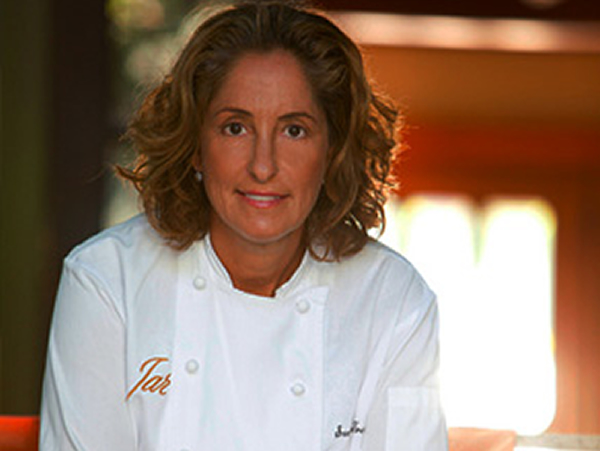
Suzanne Tracht (Photo courtesy Tracht)
Chef and owner of the critically acclaimed Jar Restaurant, Suzanne Tracht has won international praise for her culinary adventures at Jar. Her countless appearances on the “Today” show, Food Network, and Extra, as well as her multiple awards led her to be inducted into the Fine Dining Hall of Fame and participating in Fortune magazine’s Most Powerful Women Summit.
“Relating to people and making them feel warm and welcome isn’t hard and you can do it in many ways, which is why I cook,” Tracht said. “I like feeding people and making them happy.”
JAR
8225 Beverly Blvd.
323-655-6566
BEST BUSINESSPERSON: BRAD LAMM, BREATHE LIFE HEALING CENTER
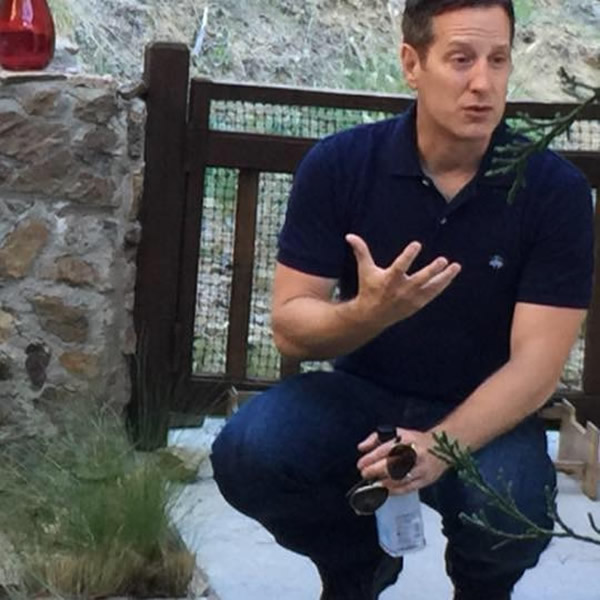
Brad Lamm (Photo courtesy of Lamm)
Fifteen years ago Brad Lamm was a self-proclaimed total mess. He was bulimic. He smoked two packs of cigarettes a day. He was an alcoholic, addicted to meth, and he supplemented all of this by taking Xanax. In 2002, he got clean.
Lamm’s journey to help others grew into an empire with two treatment centers that have helped numerous people in the LGBTQ community get clean and sober.
“I knew I was gay at 5 years old,” he says. “When I took my first drink at 15, I was deliciously soothed. By the time my first partner died in 1989, I was 19 years old and convinced not only was I going to die, but we were all going to die.”
He added, “We were part of this sad infected class with no upside… Gay men in my generation, pre-HIV cocktail, it was more than a death sentence, it was a shame sentence. It was a downward spiral. It was a grizzly and gruesome death. And I’d already been cast out of my family.”
ACT UP became Lamm’s upside. Although he was still getting high at the time, he fell into a clan he calls “purposeful,” working to make progress and trying to save his life.
“I found a place for my rage, but I thought I was going to die from alcohol and drugs, so when I didn’t, it was an amazing ‘ah-ha’ coupled with helping others, and it was all congruous with my trauma survival and being a gay man,” Lamm says.
It was in Lamm’s search for what to do with his life after getting clean that he found doctor Dr. Judith Landau, a South African psychiatrist focused on “invitational intervention,” a trauma-informed approach to helping families help their families.
“Essentially you invite your family to an intervention and the work starts from there. It suited me and it coincided with enormous energy I had around, never thinking I’d stop this litany of things that were killing me,” he says.
Lamm’s entre into the work Landau was doing eventually led to starting an intervention practice himself in New York, 13 years ago, and it really took off thanks to contacts he’d made in his former life as a TV weatherman.
“Some of the same skills I had as a journalist and some of the people I grew up in that industry with were now in TV running shows, and they knew about my remarkable turnaround.
“The ‘Today’ show said come and do a show on recovery, and Oprah said come and do a docu-series on food and that became “Addicted to Food,” an eight-part series produced for her. Then Dr. Oz said come help launch the show. And I did like 30 stories. That was the rocket fuel to this mission of helping my recovery community and their families reduce its suffering,” Lamm says.
Five years ago, Lamm opened a trauma-informed treatment center that would accept health insurance, Breathe Life Healing Center in Los Angeles.
“Meth and alcohol was my struggle, drug and hurt, so to see treatment in my community is powerful,” he says.
He and Scott Sanders, a Tony, Grammy and Emmy winning television, film and theater producer (Sanders produced the musical “The Color Purple” for Broadway), were married and it was the first gay wedding Oprah attended.
He says he sees so much of himself in the Celie character from “The Color Purple.”
“You’re at the end of the rope and you’re so beaten down, and then all of a sudden instead of cutting Mister’s throat, you choose grace and find your way. And part of that is forgiveness. But forgiveness doesn’t mean I need to live up to anyone’s version of who I need to be,” Lamm says.
Lamm says the headline of his life continues to be defined by something famed author, Alice Walker said to him 13 years ago.
“She told me that ‘the power of you is not your story, but that you’re a ‘bodhisattva.’ I was like, what’s that? She told me to go and look it up. It means, the one who goes into the lake of fire to help another out. That’s the beauty of every person to help another. The very wreckage of my past becomes the crown jewel of my ability to help another,” Lamm says.
BREATHE LIFE HEALING CENTER
8730 Sunset Blvd.
800-929-5904
EDITORS’ CHOICE, BEST LGBT BUSINESSPERSON: OLIVER ALPUCHE, REDLINE
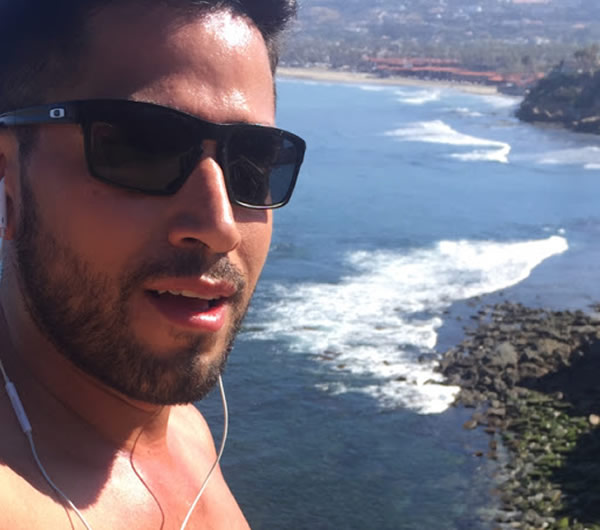
Oliver Alpuche (Photo courtesy of Alpuche)
When asked what inspired the business venture that led to the opening of this premier gay bar in DTLA, Oliver Alpuche said, “I’ve lived downtown for eight years and noticed that the LGBTQ community was growing, but we had nowhere to go and meet each other. Downtown deserves a dedicated queer space 365 days a year.”
That paved the way for the DTLA Proud Festival, which Oliver created. “DLTA Proud is committed to celebrating everyone’s story, to spreading optimism, to growing our community and to expanding our definition of diversity,” he said. “I love Los Angeles because of how diverse it is.”
REDLINE
131 E 6th St.
BEST LAWYER: S. CHRISTOPHER WINTER
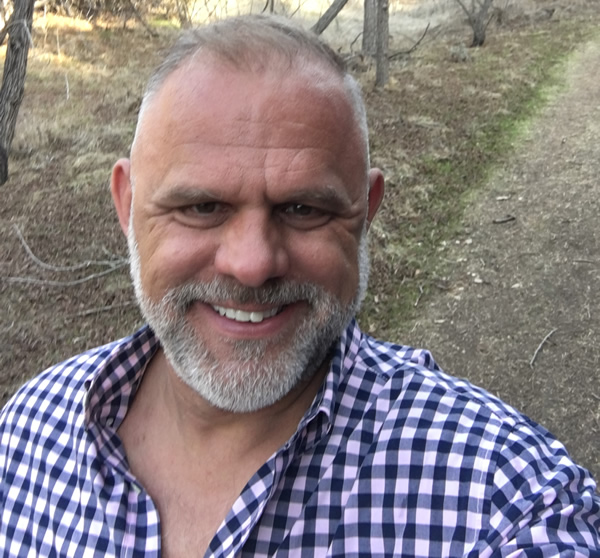
S. Christopher ‘Kit’ Winter (Photo courtesy of Winter)
S. Christopher (“Kit”) Winter didn’t always want to be a lawyer.
“I wasn’t one of those kids who had a clear idea of what I wanted to be when I grew up,” he said. “I could envision myself doing a lot of different things. It all seemed interesting.” That curiosity is reflected in his varied career in New York between graduating from Yale in 1987 and starting law school at UCLA in 1994. “I had a little bit of career ADD after college,” Winter said. “I worked in advertising sales, graphic design, desktop publishing – and I always had a side gig.”
Those side gigs included promoting parties at Limelight, Sound Factory and other New York nightclubs featuring DJs such as Frankie Knuckles, Little Louie Vega, and Junior Vasquez; bartending at various restaurants in the West Village and Chelsea; and working catering jobs for clients including Madonna.
“I think people were surprised when I decided to go to law school,” Winter laughs. “It wasn’t something that you would have necessarily thought was in my future.”
Surprising or not, Winter excelled at law school, graduating UCLA law in 1997 in the top 10 percent of his class and winning numerous academic honors. For more than two decades since then, Winter has been practicing law in Los Angeles, in settings ranging from large national law firms to his current solo practice.
“I don’t believe in fighting for the sake of fighting,” Winter says about his philosophy. “My goal as a lawyer is to help my clients navigate their legal challenges as quickly and affordably as possible.”
Winter’s practice is focused on serving as outside general counsel to small-to-medium sized companies, encouraging his clients to take a proactive approach to avoiding legal problems and crafting effective strategies to address problems. His legal background includes experience in litigation, intellectual property and general business law, and he has authored portions of treatises relating to privacy law and technology transactions.
Winter doesn’t specifically target his practice to the LGBT community, although he says he represents a diverse group of clients.
“I’m a ‘gay lawyer’ because I’m gay and I’m a lawyer,” he jokes. “I’ve been out of the closet since I was a teenager.”
Indeed, Winter has a long history of LGBT activism extending back more than 30 years. As an undergraduate at Yale, he was the co-chair of the Gay & Lesbian Co-op (with the late Sarah Pettit, a founding editor of OUT magazine), and part of a group of students who successfully lobbied the Yale Corporation to include “sexual orientation” in the university’s non-discrimination policy in 1986.
“I was sort of a big gay on campus,” Winter recalls, “writing op-eds in the Yale Daily News, arranging protests, that kind of thing.” Asked whether he contributed to the environment that led the Wall Street Journal to label Yale the “Gay Ivy” in 1987, Winter laughs, “I’d like to think so. I definitely left Yale a gayer place than I found it.”
Winter moved to New York City in 1987, in the middle of the AIDS crisis and shortly after the founding of ACT UP. “It was a terrifying time,” Winter says. “While my straight friends from college were starting their careers or heading to graduate school, gay men were trying to survive an apocalypse.”
Winter became involved in ACT UP and found a home in gay publishing, working first at the New York Native, New York’s gay newspaper, and later serving as the founding advertising director of Outweek magazine.
He later served as the production manager of QW, a gay newsweekly (Troy Masters, Los Angeles Blade publisher was a founder and publisher of QW) for which he also briefly penned the advice column under the moniker “Queer Abby.” “I don’t think we thought much about trademark law back then,” Winter laughs. After working as a freelance desktop publisher at various Conde Nast titles including Mademoiselle, Allure, and Details, Winter decided to pursue the challenge of a career in law, and hasn’t looked back since.
“I love being a lawyer,” Winter says. “Legal issues can be overwhelming to people, and can be fatal to businesses. Helping my clients get through that successfully is very rewarding.”
Winter is married to Patrick Jensen, a Licensed Marriage and Family Therapist. They live in Silver Lake and have two dogs and two cats.
This year will mark Winter’s fourth time riding in AIDS/Lifecycle to raise money for the Los Angeles LGBT Center.
EDITORS’ CHOICE, BEST LAWYER: LAURA W. BRILL, KENDALL BRILL & KELLY LLP
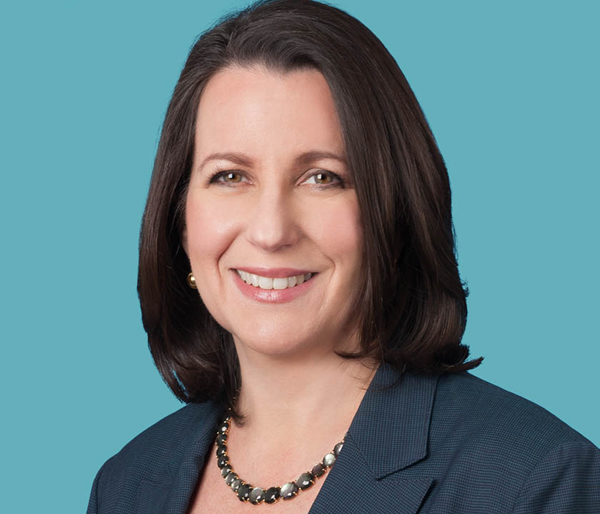
Laura W. Brill (Photo courtesy of Brill)
A lifetime focus on cases that promote equal rights, make Laura Brill a force in the fight against discrimination.
“One of my briefs in the early 1990s argued in the case of Lawrence v. Texas (a challenge to a state anti-sodomy statute) that discrimination based on sexual orientation was a type of sex discrimination and that the statute should be ruled unconstitutional on that basis. That same argument has been made many times over the years…this theory is now gaining recognition by courts and administrative agencies, including most prominently, in cases relating to employment discrimination.”
In the case Colin v. Orange Unified School District, Brill helped pave the way for Gay Straight Alliances. Brill discussed this significant moment: “We got the first preliminary injunction requiring the school to allow the club to meet and use school facilities just like any other club. One of my favorite moments since then has been going to gay Pride events more recently and seeing the huge numbers of wonderful high school students marching with their Gay Straight Alliance banners. I’m so happy to have had a part in helping kids have a safe environment at schools.”
“My New Year’s resolution is to do all I can to increase voter registration rates, especially among young people and especially in the LGBTQ community. Many people don’t know that young people can pre-register to vote when they are 16 or 17. Then when they turn 18 they will be automatically registered to vote,” Brill said. “Most people don’t know about pre-registration, but we need everyone registered so we can make sure government policies reflect our priorities, instead of the opposite.”
Kendall Brill & Kelly LLP
10100 Santa Monica Blvd
310-556-2700
BEST ALLY: MAYOR ERIC GARCETTI
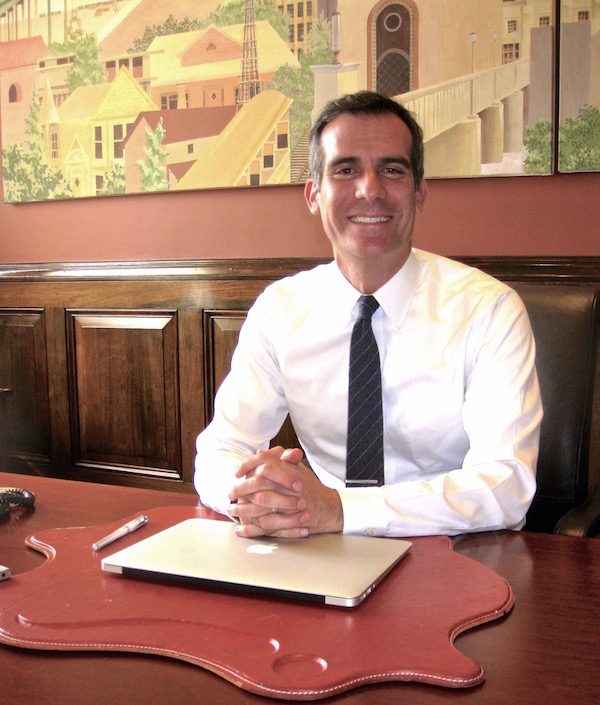
LA Mayor Eric Garcetti in his office (Photo by Karen Ocamb)
EDITORS’ CHOICE, BEST ALLY: LISA VANDERPUMP
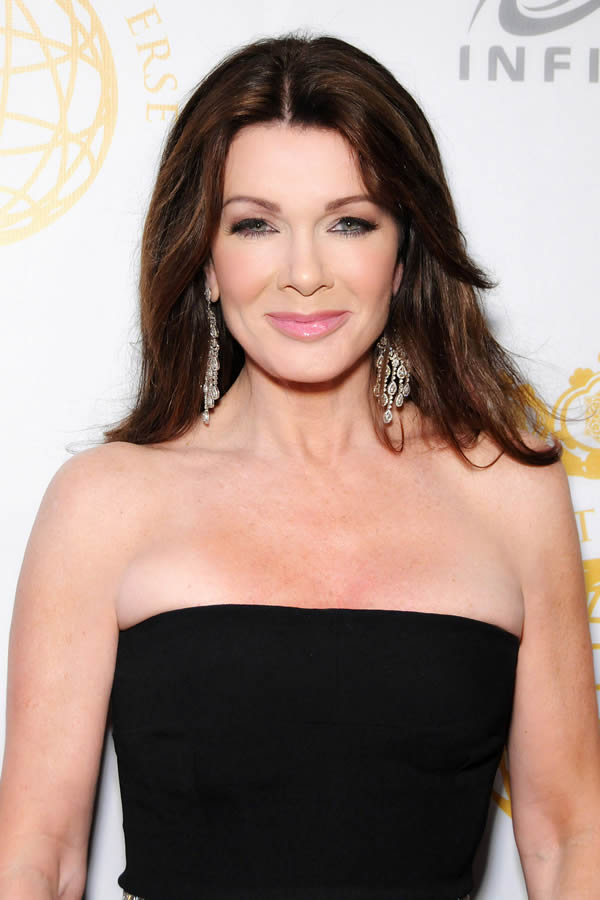
Lisa Vanderpump (Photo by Toglenn; courtesy Wikimedia Commons)
As an entrepreneur, avid activist, author, television personality, and restaurant owner of LA staples such as Pump and SUR, Lisa Vanderpump is an LA icon. She has consistently stood up for the LGBT community, having worked as a spokesperson for GLAAD, led the AIDS Walk Los Angeles, served as grand marshal of 2017 Long Beach Pride, worked with Desert AIDS Project, The Trevor Project, the LA Gay & Lesbian Center and more.
In addition to advocating for the LGBT community, Vanderpump created The Vanderpump Dog Foundation, working to help end animal abuse. She somehow also found time to produce “Vanderpump Rules,” the smash reality TV show. She’s the ultimate philanthropist who really does it all. Vanderpump has a love for all living creatures that shines through in her humanitarian efforts, making her a model ally.
BEST DRAG SHOW: LEGENDARY BINGO AT HAMBURGER MARY’S
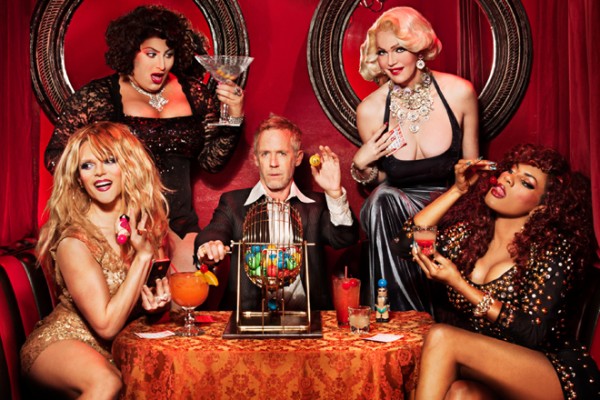
Jeffery Bowman and cast members from Legendary Bingo. (Courtesy Legendary Bingo)
Beautiful drag queens, fantastic food, money, charities…Bingo! Legendary Bingo at Hamburger Mary’s is not just a great drag show, it’s a fantastic and sometimes wild night out. Jeffery Bowman is almost as legendary as Hamburger Mary’s.
HAMBURGER MARY’S
8288 Santa Monica Blvd
323-654-3800
EDITORS’ CHOICE, BEST DRAG SHOW: LYRIC HYPERION, GREEN EGGS AND GLAM
Lyric Hyperion Theatre & Café
2106 Hyperion Ave.
323-928 2299
BEST BAR: THE ABBEY
Where else are you going to see Diana Ross or Elon Musk tear up the dance floor? The Abbey is arguably the best-known gay bar in all of the U.S. and always a fun night out with your besties. It’s a treasured LA icon and so is owner David Cooley.
THE ABBEY
692 N. Robertson Blvd.
310-289 8410
EDITORS’ CHOICE, BEST BAR: REVOLVER
WeHo loves the oversized drinks and darts in the back at this famous video bar.
REVOLVER
8851 Santa Monica Blvd.
310-694 0430
BEST RESTAURANT: SUR RESTAURANT AND LOUNGE
“Real Housewives” star Lisa Vanderpump’s SUR is a great place for people watching, and the upscale food is, well, impressive. It’s definitely a see-and-be-seen scene that can’t be missed.
SUR
606 N. Robertson Blvd.
310-289 2824
EDITORS’ CHOICE, BEST RESTAURANT: Cecconi’s West Hollywood
The Northern Italian cuisine is spectacular, the decor a kind of elegant retro Roman-chic with outdoor seating. True luxe.
CECCONI’S
8764 Melrose Ave.
310-432 2000
BEST GROCERY STORE: TRADER JOE’S
Quite simply, the best place to go shopping for unique, curated food brands.
TRADER JOE’S
7310 Santa Monica Blvd.
323-969-8048
EDITORS’ CHOICE, BEST GROCERY STORE: PAVILIONS
Extensive selections of the highest-quality foods. And, at least in WeHo, it’s where the boys are.
PAVILIONS
8969 Santa Monica Blvd.
310-595-1730
BEST REAL ESTATE AGENCY: THE COLLECTIVE REALTY
Experienced real estate agents who negotiate well for their clients. One reader said, “The Collective is the concierge service of boutique realty. And Andy Vulin is the best real estate investment teacher I ever met.”
EDITORS’ CHOICE, BEST REAL ESTATE AGENCY: BERKSHIRE HATHAWAY
Find the most luxurious West Hollywood or Beverly Hills home of your dreams and call Berkshire Hathaway, because no one can close it faster or more fairly. Readers praised their attentiveness to detail.
BERKSHIRE HATHAWAY
131 S. Rodeo Dr.
310-844-6434
BEST STYLISTS: SHORTY’S BARBER SHOP
Whatever level of service you require for your coif, Shorty’s is the place to go. It’s the very best place in West Hollywood for a drop in fade. People travel from all over Los Angeles to the unmistakable storefront on Fairfax.
SHORTY’S
755 N. Fairfax Ave.
323-297-0554
EDITORS’ CHOICE, BEST STYLIST: MARCO PELUSI
Celebrity hairstylist Marco Pelusi has the best tips for looking great. “Ask your stylist to do a gloss or a shine treatment when you’re next at the salon,” he recommended. “Your hair can often dry out and look dull, lifeless, and frizzy during winter months; the added shine treatment will boost the condition of your hair and make it look healthy.”
MARCO PELUSI
636 N. Robertson Blvd.
310-967-0999
BEST CAR DEALERSHIP: BEVERLY HILLS BMW
One reader commented, “At Beverly Hills BMW, I walked through and decided what I wanted and with no pressure at all I left with the $90,000 ride of my dreams. No hassles, no pressure. Just great service and a brilliant ride.”
BEVERLY HILLS BMW
5070 Wilshire Blvd.
877-794-4678
EDITORS’ CHOICE, BEST CAR DEALERSHIP: HONDA OF HOLLYWOOD
Honda of Hollywood has one of the best full-service shops of any dealership in Los Angeles. Our favorites are the 2018 CRVs and HRV. Great quality SUVs at a realistic price.
HONDA OF HOLLYWOOD
6511 Santa Monica Blvd.
323-466-3247
BEST MEDICAL PROVIDER: CEDARS SINAI URGENT CARE
World-class urgent care from one of the world’s leading medical institutions.
EDITORS’ CHOICE, BEST MEDICAL PROVIDER: SOUTHERN CALIFORNIA MEN’S MEDICAL GROUP
Doctors you can talk to and advice that’s easy to take because they are just like you. Comprehensive, fully loaded and state of the art.
SOUTHERN CALIFORNIA MEN’S MEDICAL GROUP
9201 Sunset Blvd.
310-550-1010
BEST FITNESS FACILITY: 24 HOUR FITNESS
One of the busiest places in WeHo, 24 Hour Fitness is as much a family for some as it is a gym.
24 HOUR FITNESS
8612 Santa Monica Blvd.
310-652-7440
EDITORS’ CHOICE, BEST FITNESS: EQUINOX FITNESS
A little bit of luxury goes a long way during a hard workout. Outstanding, modern and clean facilities are what make Equinox worthy of Editors’ Choice.
EQUINOX FITNESS
8590 Sunset Blvd.
310-289-1900
BEST MARIJUANA DISPENSARY: MEDMEN
Since Jan. 1, MedMen has experienced lines down the block and its fans are true believers in the almost Apple Store experience of boutique weed products of every kind. Founder Andrew Modin, almost overnight, has become a business sensation in West Hollywood and is now ramping up to take it national.
MEDMEN
8208 Santa Monica Blvd.
323-848-7981
EDITORS’ CHOICE, BEST DISPENSARY: ZEN HEALING WEST HOLLYWOOD
Some say it has one of the highest-grade selections of any store in Los Angeles. Its edibles and medicinal choices are outstanding.
ZEN HEALING
8464 Santa Monica Blvd.
323-656-6666
BEST HOTEL: WALDORF-ASTORIA
One of the world’s leading hotel names is now at home along Santa Monica and Wilshire Boulevard in Beverly Hills. Unprecedented luxury is just the tip of the iceberg of the Waldorf experience. After watching it soar skyward during construction, you know you want to spend the weekend there. Staycation!
WALDORF-ASTORIA
9850 Wilshire Blvd.
310-860-6666
EDITORS’ CHOICE, BEST HOTEL: JEREMY HOTEL
Soon to experience a name change — think One Hotel — The Jeremy, as everyone now calls it, is an astounding architectural gem and gorgeous hotel overlooking Rainbow City. It’s not only a great place to stay, it’s also a destination.
JEREMY HOTEL
8490 Sunset Blvd.
310-424-1600
BEST HOUSE OF WORSHIP: FOUNDERS METROPOLITAN COMMUNITY CHURCH
The house that MCC founder Troy Perry built is a rollicking, down home gospel of faith and a beacon in the fight and one of the most consequential cornerstone establishments of LGBT history in LA.
FOUNDERS
4607 Prospect Ave.
323-669-3434
EDITORS’ CHOICE, BEST HOUSE OF WORSHIP: KOL AMI
One of the most significant Reform synagogues in America is also one of the most innovative. A powerhouse of Jewish tradition and thought, Rabbi Denise Eger is devoted to community and social justice.
KOL AMI
1200 N. La Brea Ave.
323-606-0996
BEST LGBT SOCIAL GROUP: IMPULSE GROUP LA
Impulse Group is an international group that advocates change toward healthier sexual lifestyles among gay men in 18 cities around the world, based in Los Angeles. Founder Jose Ramos felt stronger community bonds and family building among peers can reduce HIV rates and save lives. Turns out he was right.
EDITORS’ CHOICE: BEST LGBT SOCIAL GROUP: VARSITY GAY LEAGUE
California’s largest LGBT recreational sports league is celebrating 10 gay years! A robust and well-organized calendar of Kickball, Dodgeball, Bowling, Tennis, Soccer and Volleyball. Who says gays don’t do sports? Will Hackner and Andrew Miller want to know.
BEST MUSEUM: LOS ANGELES COUNTY MUSEUM OF ART
LACMA is a world-class museum and with its expansion, including an incorporation of Hollywood movie and Oscar history, it’s unrivaled. Many outstanding collections and community events, like outdoor films, make it a treasured institution.
LACMA
5905 Wilshire Blvd.
323-857-6000
EDITORS’ CHOICE, BEST MUSEUM: THE BROAD
One of the most important modern museums in the western United States is also one of the most iconic landmarks in DTLA. Eli Broad’s massively important contemporary art collection almost wound up in a building that would have been where the new Waldorf is today.
THE BROAD
221 S. Grand Ave.
213-232-6200
BEST NON-PROFIT: AIDS HEALTHCARE FOUNDATION
AHF provides services to more than 600,000 HIV+ individuals in 15 U.S. states and 36 countries worldwide and is the largest AIDS service organization in the world. Michael Weinstein founded the agency as a hospice when no hospital would care for AIDS patients and since then has grown it into a billion-dollar non-profit.
AIDS HEALTHCARE FOUNDATION
6255 W. Sunset Blvd.
323-860-5200
EDITORS’ CHOICE, BEST NON-PROFIT: LOS ANGELES LESBIAN & GAY CENTER
Founded by Morris Kight in 1969, LA’s LGBT Center is now the world’s largest LGBT social service agency and community center and is in the middle of an expansion that will revolutionize its reach. Lori Jean, its CEO, has become one of the most important LGBT non-profit leaders in the U.S.
LGBT CENTER
1625 N. Schrader Blvd.
323-993-7400
BEST VET: LAUREL PET HOSPITAL
A truly empathic provider of outstanding medical services for generations of LGBT community members in West Hollywood.
LAUREL PET HOSPITAL
7970 Santa Monica Blvd.
323-654-7060
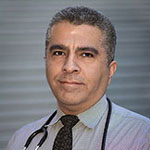
Dr. Mark Nunez
EDITORS’ CHOICE, BEST VET: Dr. MARK NUNEZ, formerly of VETERINARY CARE CENTER, now Medical Director of VCA Miller-Robertson Animal Hospital.
Dr. Mark Nunez was previously Veterinary Care Center’s go-to doctor, known for going the extra mile to save your pet. Dr. Nunez recently accepted a new position as Medical Director of VCA Miller-Robertson Animal Hospital
VCA Miller-Robertson Animal Hospital
8807 Melrose Ave, Los Angeles, CA 90069
310-657-7050.
BEST LA ATTRACTION: GRIFFITH OBSERVATORY
The go-to place for all family visits and the south-facing slope of Mount Hollywood offers views that just can’t be beat.
GRIFFITH OBSERVATORY
2800 E. Observatory Rd.
213-473-0800
EDITORS’ CHOICE, BEST LA ATTRACTION: HOLLYWOOD BOWL
The iconic outdoor theater celebrates everything about Los Angeles and features some of the greatest names in music, under the stars.
HOLLYWOOD BOWL
2301 N. Highland Ave.
323-850-2000
BEST RED CARPET EVENT: HRC LA DINNER
The Human Rights Campaign brings out the star power each year in Los Angeles and is famous for an exuberant red carpet experience. On March 10, 2018 you have your next chance to take a walk.
EDITORS’ CHOICE, BEST RED CARPET: OUTFEST
The world’s most important LGBT film festival is also becoming one of LA’s most anticipated events.
(Mary Jo De Silva contributed to this article)
a&e features
The art of controlled chaos: Patrick Bristow brings the Puppets to life
As co-creator and host of Puppet Up! Uncensored, a wild, “adults-only” improv puppet show developed with Brian Henson of the Jim Henson Company, he combines razor-sharp comedy with next-level puppetry in a way that’s as unpredictable as it is funny.
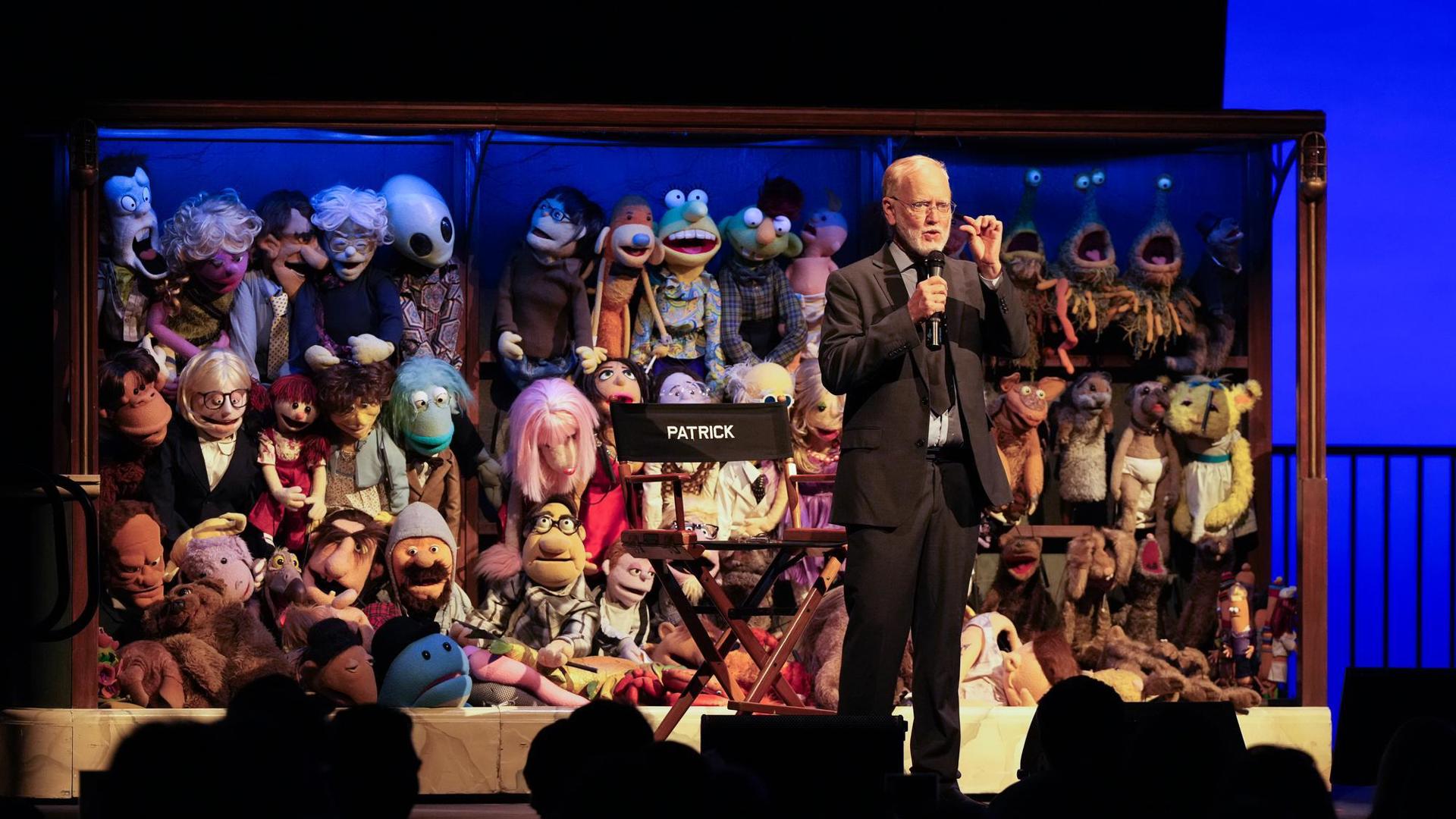
Whether he’s elbow-deep in puppets or stealing scenes on screen, Patrick Bristow knows how to keep things unapologetically unpredictable and rich with comedy. With decades of improv under his belt and a knack for the unexpected, he proves that comedy and puppetry are best when it’s uncensored.
For over three decades, actor, director, and improv vet Patrick Bristow has been a familiar face across television and film, from his memorable portrayal of Peter on the groundbreaking sitcom Ellen to scene-stealing appearances on Seinfeld, Curb Your Enthusiasm, and more. But Bristow’s creative energy doesn’t stop in front of the camera. As co-creator and host of Puppet Up! Uncensored, a wild, “adults-only” improv puppet show developed with Brian Henson of the Jim Henson Company, he combines razor-sharp comedy with next-level puppetry in a way that’s as unpredictable as it is funny. We chatted with Bristow from his home in Joshua Tree to talk about the show’s origins, the lasting lessons of improv, his unique take on fame, and the true essence of Nellydom.
For our readers who are not yet familiar with the excellence that is Patrick Bristow, could you introduce yourself?
Sure! I’m Patrick Bristow. For most of my 30-some odd years career, I’ve worked as an actor in TV and film, lots of small but memorable roles. But today, I’m here to talk about a show I co-created with Brian Henson of the Jim Henson Company called Puppet Up! Uncensored. It combines brilliant Henson puppeteering with improv comedy. I was in the main company at The Groundlings years ago and have been teaching improv ever since. So this show is a perfect blend of those worlds—kind of a chocolate and peanut butter situation. And we’ve been doing it, on and off, for nearly 20 years.
What’s it like collaborating with Brian Henson?
Brian is incredibly talented, legendary in his own right. Working with him is a dream. We’re both focused on creating the most fun experience possible, both for our audiences and our performers. When we disagree, we figure it out quickly or try both options and go with what works best. There’s no ego involved, just a shared goal.
How did Puppet Up! Uncensored come to life?
Originally, Brian brought me in to teach improv workshops for his puppeteers. He wanted them to gain some of the benefits of improv training—spontaneity, specificity, making bold, immediate choices. We had a group of high-level puppeteers—people whose work you’d definitely recognize, even if you don’t know their names. Some had improv experience already, some didn’t, but they were all great.
After the trial period, Brian asked, “Do you want to keep doing this?” And I said, “Absolutely.” It was really exciting for me to teach improv in a new way because puppeteering requires such a different approach. It wasn’t the same as teaching “fleshies,” as we call human performers in the puppet world.
“Fleshies”?
(Laughs…) Yeah, it sounds a little derogatory, and maybe it is, but I’m standing by it.
If you could create a puppet of any celebrity to add to the show, who would it be?
Oh, that changes weekly! But right now? A Pedro Pascal puppet. If the Henson team could make one as hot as the real Pedro, I’d be thrilled.
Puppet Up! is described as improv meets puppetry… but for adults. How do you balance the humor?
We definitely bring the snark and satire. We try not to get political, because we want a wide spectrum of audiences to enjoy the show. But yes, it can get spicy. And sometimes a little too spicy, at which point I’ll step in as the “schoolmarm” and redirect. The audience often gives us wild suggestions, and we run with it, within reason!
Let’s rewind for a moment back to the ‘90s. You were on Ellen, a show that was way ahead of its time. What was that experience like?
It was thrilling and, at times, scary. There was a bomb threat on set while we were filming the infamous “Puppy Episode” when Ellen came out. I wasn’t there that day, thankfully, but it was intense.
Later that season, when her coming out was being teased, I’d get recognized and even grabbed by strangers in public with questions. That visibility gave me a little taste of what fame feels like, and I realized it wasn’t for me. I liked being the guy who dodged in and out of scenes without the chaos that comes with full-blown celebrity.
So you’d take the work, not the fame?
Exactly. The 18-year-old me wanted to be a TV star. But the 30-something me, and now older, gray-haired me, is content making a living doing what I love. Fame sounds exhausting. I’ll take the bank accounts, though! (laughs)
Speaking of things you love: improv. What’s one thing from improv that people can apply to their everyday lives?
Listening without pre-planning. Really tuning in to what someone is saying, absorbing it emotionally and imaginatively, and then responding authentically. Improv teaches you to focus, to be present, and to let go of control, especially if, like me, you’re a hyperactive overthinker. It’s been a lifesaver for me.
Between performing, teaching, and directing, what role do you connect with most now?
Teaching. And hosting Puppet Up! Hands down. Both involve spontaneous interaction, deep listening, and applying everything I’ve learned. If teaching paid as well as TV work and came with insurance, I’d do it full time.
How have you seen representation in entertainment evolve over the years?
It’s come a long way. We’ve moved beyond the old stereotypes: the “straight-passing gay character” being a compliment to a much richer, more diverse portrayal of identities. I think of people like Titus Burgess, bold, bright, and unapologetically original. When I played Peter on Ellen, my husband said I was “striking a blow for Nellydom,” which I was proud of. That’s me! I’m into Jane Austen, I (try to) play the harp, and I once played Queen Elizabeth I at The Groundlings. If I repped for the Nells, I’m honored.
For readers unfamiliar with the term “Nellydom,” can you enlighten?
It’s the kingdom of femme expression, and unapologetically so. A little swish in your walk, pearls at dinner. Not in-your-face, just not hiding. There’s strength in that. The Nellys were at the frontlines of Stonewall. So yes, I’ll proudly reclaim Nellydom.
Puppet Up! Uncensored runs July 16 – 27th, 2025 at the Kirk Douglas Theatre: Tickets here
a&e features
How this Texas drag king reclaimed their identity through Chicano-inspired drag
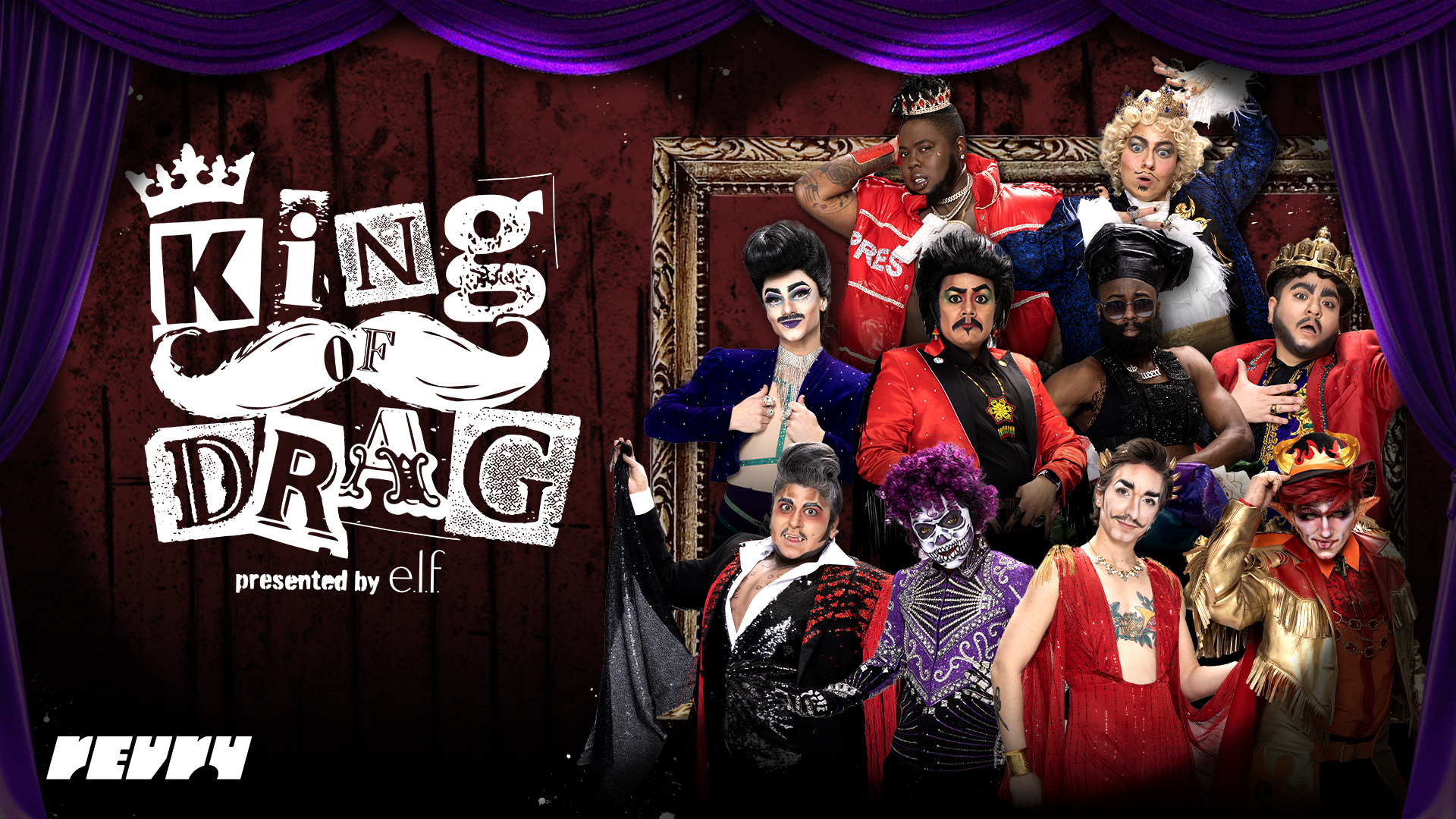
Three out of ten drag kings who were cast for this first season of King of Drag self-identified as Latinx and after episode two, only one Latinx king remains in the running for the competition.
Buck Wylde, a king from Dallas, Texas delivered a performance that took inspiration from their Catholic upbringing and Catholic school days to put together this persona. During the episode, they shared that they like to “play with religion.”
Murray Hill responded by adding, “sometimes we can’t afford to go to therapy for the Catholic guilt, so we do drag.” Buck Wylde says their therapy and their church is drag.
Buck Wylde, cancer sign, goes by Trigger Mortis when they are outside of drag and present more on the femme side. Along with Big D—another drag king on the series—they are the only two who are more femme outside of their drag persona.
During this episode, Buck Wylde also spoke about the difficulty of performing drag in a red state. They live in conservative Dallas, so they still struggle to find large-scale acceptance and support in the midst of statewide legislation targeting the LGBTQ community in Texas.
“Sometimes it doesn’t feel [as] safe as [I] would like it to be. There’s protesters all the time and we don’t have as many spaces to perform as kings there,” they said in the interview.
Buck Wylde says that for them, the most important thing about drag, is that it is and always has been a protest.
Living in a conservative state is a challenge to them as a drag king, but they say that it’s important for them to stand their ground and not only bring that representation to these areas, but also intentionally keep it there.
“So many people leave Texas for their safety and mental health to go to Portland, LA, or Colorado Springs or you know, anywhere but here.”
During the episode, Buck Wylde also opened up about how their religious background and cultural heritage added an extra layer to their identity issues growing up where they did. Their family wanted them to assimilate and even prevented them from speaking Spanish and they say that through Buck, they are able to re-examine what it means to be a part of that culture.
Buck Wylde is a third generation Mexican-American and they say that though their Spanish is not fluent, they say they do prefer their horchata without (ICE).
“I kind of straddled different worlds there, because I was sort of assimilated but I still had my Mexican culture. I always felt like I wasn’t connected enough because of the assimilation and it was through drag that I was able to reclaim my culture.”
In the first round of competitions for the second episode, the kings broke up into three teams of three for an improv skit where they would have to mansplain a topic and whichever team did it the best—won the group Weenie Challenge.
The winning team included Buck Wylde, Alexander the Great and Henlo Bullfrog. Together they improvised a skit where they mansplained the Amelia Earhart story.
For the solo show, they dressed up as ‘The Devil’ for the improv solo challenge, cracking a joke about how they are dressed like the person currently living in The White House.
Dressed as the Devil, sporting a Zoot Suit for the final competition, Buck Wylde improvised a skit with food.
Buck Wylde says they felt the pressure to perform because along with the other nine kings who were cast, they are the first ten kings to make it to the mainstream and represent king culture.
“We call ourselves the first ten because whatever happens, we’re responsible for how the kings are viewed and how we move forward together, being the blueprint for what’s to come,” said Buck Wylde in an exclusive interview with Los Angeles Blade.
Back stage before the solo improv competition, Buck Wylde says they felt their drag persona “crumbling” away.
They felt like Buck had abandoned them prior to their big moments to prove to the judges that they should stay in the running for the competition. They went up against Perka $exxx, who gave a king-based Dave Chappell performance.
In the end, it was Perka $exxx who received a 4-1 vote from the judges.
Buck Wylde left the show with some advice for the kings and the audience: “No matter what life throws at you, always remember who the Buck you are.”
King of Drag is now available to stream on RevryTV, an LGBTQ streaming platform for queer movies, TV shows, music and more — all for free. New King of Drag episodes will premiere weekly on Sundays.
a&e features
From Drag Race to Dvořák: Thorgy Thor takes the Hollywood Bowl for Classical Pride
This Thursday, the Hollywood Bowl will host the nation’s first Classical Pride, spotlighting LGBTQ+ artists of today and those who have made lasting impacts across centuries of music.
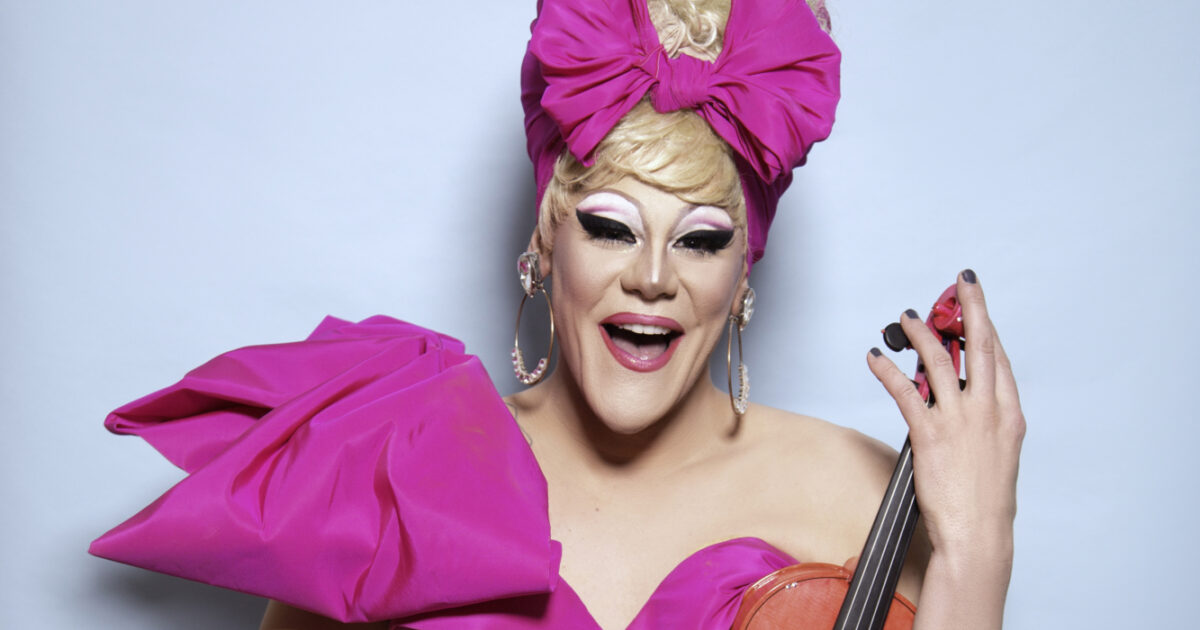
Thorgy Thor is reimagining what a symphony concert can be – queerer, louder, and way more fabulous. Classical music has always been a little gay; Thor is just making it official.
This July 10th, the Hollywood Bowl will be shaking things up with something a lot more fabulous than their usual line-up: Classical Pride, a star-studded celebration of queer excellence in classical music. Conducted by Oliver Zeffman, the program fuses Bernstein and Tchaikovsky with the glittering premiere of Pride Songs, reminding audiences that even the most straight-laced and serious-faced composers had secrets, some of which wore capes and wrote love letters to their (clears throat) roommates.
Enter Thorgy Thor, violinist, drag icon, and reigning monarch of orchestral mischief. Known from RuPaul’s Drag Race and her genre-busting “Thorchestra” shows, Thor is not only crashing the classical music party but redecorating it as she does. Armed with a Juilliard-level command of the violin and a wardrobe that would make Marie Antoinette feel modest, Thor’s been turning symphony stages into something that looks a lot like Studio 54 with better acoustics.
Ahead of her Hollywood Bowl debut, our publisher Alexander Rodriguez caught up with Thor to talk about shattering stereotypes, confusing classical purists, and why drag queens might just be the saviors of a dwindling symphony scene. Spoiler: there will be feathers, fan clacks, and at least one moment of unexpected depth. Because when Thor shows up with a violin and a vengeance, everyone listens, whether they planned to or not.
Some people associate Pride with dance and club music—but not classical. Why do you think that is, and why is it important to change that?
There’s a lot to unpack there. First off, I’m one of those people who definitely associates Pride with music – club music, dancing, parades, rainbow colors, joy. But not many people think of classical music in that context. I’ve been a classical player my whole life, and I’ve also marched in Pride parades. I celebrate both.
The truth is, a lot of people just don’t have access to the history of queerness in classical music. But it’s there. Some of the most prolific composers and conductors – Copland, Tchaikovsky, Bernstein – were gay. Back in the day, let’s be honest, probably everyone was a little bit queer. And since they’re not here to argue it, we get to speculate.
Classical Pride shows are important because they start to bridge that gap. It’s about giving people – especially younger folks – access to stories and voices that have always been part of this tradition but were hidden or unspoken.
How did growing into your identity affect your relationship with music and performance?
I was always immersed in music. My parents supported me with lessons, and I played in orchestras all through school – concertmaster, regional competitions, all that. I was always in the front. But something felt incomplete.
Coming into my queerness, I realized sitting quietly in an orchestra just wasn’t enough. My mind always imagined more – characters, colors, lights, theatrics. I’d be playing Tchaikovsky and thinking, “What if there was a drag artist miming with fans right now?” I needed more than just the music; I needed performance, spectacle, fun.
So I started pushing the dress code. I once showed up in a tux with the pants cut into shorts and bright magenta socks – and the orchestra was not into it. I’d say, “Why do men have to wear stiff bow ties when women get to wear flowy chiffon?” I wanted to challenge tradition, even if it meant getting in trouble. And I often did. But I realized that standing out was inevitable – so I decided to embrace it.
Now, funny enough, Thom Browne and Tom Ford are putting out tuxedos with shorts and high socks. I was just ahead of the trend. You’re welcome.
Why do you think celebrating classical music is important to the queer community right now?
Honestly, orchestras are struggling. Some are shutting down. Audiences are aging. There’s a perception that classical music is stuffy or boring, but it’s not. It’s powerful. It’s emotional. It moves people.
When I perform my “4G” show with symphonies, I always have to win over the orchestra first – they’re incredibly disciplined and talented, but also very skeptical. They’re like, “We just played with Hilary Hahn and Renée Fleming… now who’s this?” But then the show starts, and they see how serious I am about the music and the drag. And afterward, they often say, “That was the most fun I’ve had in 15 years.”
I ask the audience, “Who’s here because of RuPaul’s Drag Race?” Half cheer. Then I ask, “Who’s here because they have season tickets and don’t know who I am?” The other half cheers. That’s the goal: to bring these two very different groups together, laughing and feeling something powerful – together.
What’s your approach to blending these two audiences, drag fans and classical music fans, in one space?
I break the fourth wall. I talk to the audience. I do the first-ever live symphonic walk-off competitions – with Beyoncé, Lady Gaga, feather boas, and fans. I ask, “Who’s 65 and wants to werk?” I get kids up there. I give people drag names. It’s fun, inclusive, and unexpected.
A lot of classical audiences aren’t used to being asked to breathe, let alone unwrap a lozenge. So I set the tone from the top: “Relax, this isn’t that kind of concert.” It creates a space where different generations and communities can laugh together. That’s what I’m proudest of.
Has the current political climate affected your work?
Definitely. Just last month, I was scheduled to perform with the International Pride Orchestra at the Kennedy Center. Then, suddenly, we got dropped – after our president publicly tweeted that he didn’t want any “gay shows” at the Kennedy Center. He threatened to fine them something like $400,000.
Now, he doesn’t run the Kennedy Center, but the pressure worked. They canceled us. It was heartbreaking. Did I respect the decision? Not really. But I understood – they had a whole season to think about. Still, it hurt.
The good news? We moved the show to the Strathmore Theater, and it was incredible. Sold out. The audience showed up, loud and proud. The press was global – Germany, Italy, everywhere. That was beautiful and sad at the same time. That this is what’s making international news. But the show was triumphant.
Tell us about your new show, “Music and Fashion.”
It’s a wild ride – from Bach to Beyoncé. It’s funny, visual, historical, and super interactive. I do about 15 costume changes, some on stage, some on video. We start with a caveperson banging sticks and move through every decade – 1920s, Beatles, Taylor Swift, you name it.
It’s about moments where music and fashion collided and changed everything. From Marie Antoinette to Madonna, and how that relationship evolved. It’s smart, it’s campy, and I’m incredibly proud of it.
What can we expect from your appearance at the Hollywood Bowl’s Classical Pride show?
I’m one part of a bigger lineup that includes Anthony Roth Costanzo, Jamie Barton, Pumeza Matshikiza – some amazing talent. I’ll be performing a cheeky and sexy tango on violin by Jacob Gade, with a little twist in the middle.
I’ll also be doing a live on-stage interview with conductor Oliver Zeffman. Usually conductors show up, wave the baton, and vanish. But I want people to know who’s up there. I warned Oliver I’ll be asking him some left-field questions—and I’m not telling him what they are. It’s going to be fun, a little uncomfortable, and very entertaining.
What does the future look like for queer artists in the arts under this administration?
I’m going to keep doing what I do – being visible, being joyful, and doing it all with color, humor, and discipline. Just existing in this space is an act of rebellion. I don’t need to be political in every show. The work speaks for itself.
Queerness has always been in classical music. I think hundreds of years ago, people were more open than they are now. Today, it’s wild how threatened people get by others simply being happy. I don’t know what’s coming in the next ten years, but I’ll be here, still playing, still dressing up, still making people laugh.
What’s your message to the community this Pride season?
Dare to be different. I get kids coming up to me saying they never thought they could love classical music and be queer at the same time. But they can. You can love two seemingly unrelated things – and do them both fully.
Usually the people who are “too weird” or “too different” are the ones who change the world. And eventually, everyone copies them anyway.
Catch Classical Pride at The Hollywood Bowl Thursday, July 10th at 8 pm. Tickets here.
a&e features
Latina Turner comes to Bring It To Brunch
This fiery Latina drag queen is making her debut at Bring it to Brunch
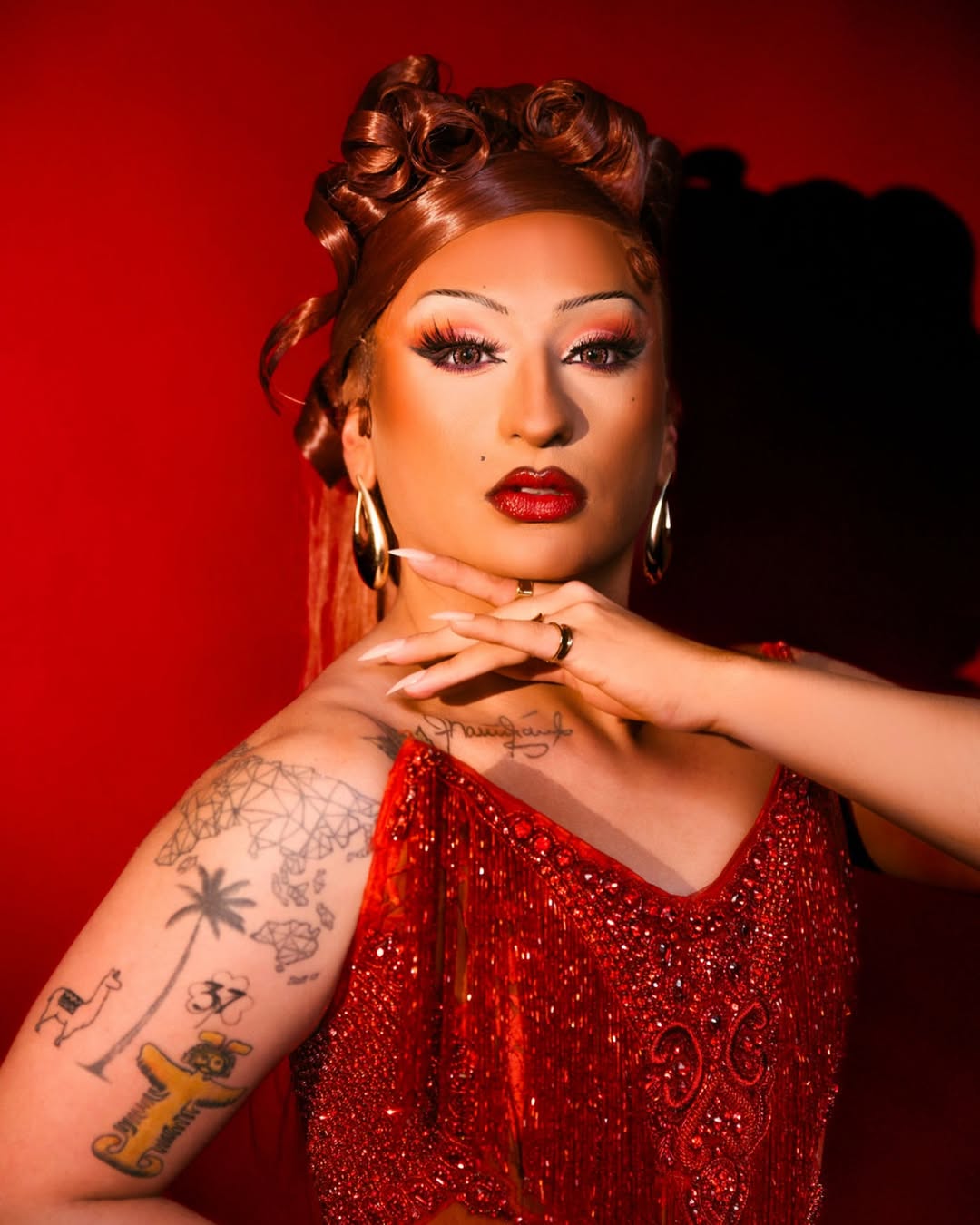
Get ready West Hollywood. There’s a Colombian heat wave about to hit this weekend. Latina Turner will join the cast of Rocco’s Bring It To Brunch hosted by Cake Moss, this Saturday at 1 p.m. Los Angeles Blade is a proud media sponsor for this fab brunch.
Latina Turner has been doing drag for more than a hot minute and she’s performed all over the nation, bringing her signature humor and killer looks everywhere she goes. We chatted with Turner as she applied her lashes and sipped a cocktail.
What was your first exposure to drag?
My first exposure to drag was when I was 18. I was in Atlanta where I saw Stars of The Century, [which is] the premier, all Black drag show of the South.
How did you come up with your drag name?
My drag name is an homage to my Latin culture and one of my favorite queens Tina Turner, but also to my sense of humor—very tongue-in-cheek, if you will.
What was your first professional gig, how did it go?
My first professional gig was actually for a car commercial. I had been doing drag for 15 minutes, but they had me listed as “real drag queen.” I said if it was real enough for them, it’s real enough for me. I got to test drive a brand new car in full drag and thank god I had that wig pinned in. My lashes were gone with the wind, earrings flew off, but the wig was on.
What sets your drag apart from other queens?
Drag is all about self-expression and artistry. As an artist and creative, my drag is about the delusion of the illusion. In my mind, I could walk down Santa Monica Blvd and not be clocked, but when I perform, it’s about the theatrics and the humor. I also learned to really connect with my audience, something I don’t see too often done. I also bring my Colombian roots and American South upbringing into my character. I think being a first generation, [we] are exposed to two different cultures that don’t normally intersect and the humor from both languages is so…ME!
What do you love most about the drag culture in Los Angeles?
The queer culture of L.A. has always been about resilience from the original gay rights riots at the Black Cat in Silverlake, to the [U.S. Customs and Immigration Enforcement] (ICE) protests. Drag queen culture isn’t just about the aesthetic and performance style, but also about community and attitude. WeHo queens have this hard work and constant hustle about them, DTLA queens are some of the most creative and entertaining queens and the Eastside queens are some of the most beautiful and hardworking entertainers in the business. No matter what the zip code is, L.A.’s queens and kings have an innate love and passion for performance and to grow as artists and the community really allows you to grow and explore your art.
How can the gay community best support our drag community?
The gay community really needs to understand that drag queens are written in the D.N.A of ALL of gay culture. We as drag queens are under so much pressure to look a certain way and though Drag Race has given the art of drag an incredible amount of visibility, not all drag is “Drag Race” drag. I need you to think of a time when you needed that extra bit of support, whether it was at a bar and wanting to talk to someone, show that same love to these queens. Tip them, share their art and continue to uplift them. Without the drag queens—both young and old—we wouldn’t be the community we are today and we will only continue to thrive if we all rise.
What is your favorite part of doing drag?
Apart from looking fierce and making some cash money, I love the feeling of rocking a performance that you have put so much time and thought into. I think as a drag queen, we overthink some details or we do certain things just for us, so that feeling of “I killed it” is such a high.
What is your least favorite part of doing drag?
My least favorite part of drag….oooof! I think that for me, the tucking (especially tucking the right way), the shaving, and the cost. It hurts my body and my pocket! But hey, beauty is pain, and my drag is never comfortable.
What is your favorite pickup line?
One time, I went up to this guy and asked him, “Do you have any kids… would you want mine?” It was all about the eye contact and body language, LOL.
How do you unwind after a night of drag?
My favorite unwind rituals are a hot shower, a full body scrub, a good moisturizer and retinol, a glass of wine and a sativa pre-roll with my feet up in my comfiest shorts. Untucked and unbothered.
What do you think the future of drag culture looks like?
The future of drag is so exciting! I love that drag is evolving, both aesthetically and performance-wise. Please, baby queens, for the love of God, clean your lace, pluck your hair lines. Marsha didn’t throw a brick for you to look like one.
What can we expect from your appearance at Bring It To Brunch?
This is my Bring It To Brunch Debut! I’m excited to bring a fun, sexy and entertaining vibe to this show! I’m going to give you fashion, exciting and upbeat performances, [all while] smelling like a million bucks.
How has doing drag most changed your life?
I think drag has really taught me so much not just about myself but also how I want to move in the world. Drag has taught me time management, communication skills and skills that are extremely transferable and useful in my day to day job and life. I also love that my drag has taught me how to love myself. Without my drag I wouldn’t have gotten to celebrate my culture or my thick and juicy behind.
Favorite song to perform to:
My absolute favorite song to perform is either “Private Dancer” by Tina Turner or “Nasty Girl” by Inaya Day—both are such strong numbers, but so different and strong!
Craziest drag memory:
My wildest drag memory was last year! I had just performed with Kesha for WeHo Pride and was ready to hit the bars. I was in a ‘lil mall dress and pumps and this girl who had clearly been drinking all day, comes up to me at the bathroom and asks me for a tampon, LOL! I was like, girl you have to be wasted to not see this beard popping through my makeup.
What is your message to the community this Pride season?
Pride started as a riot. Pride is a constant fight and though we are so incredibly lucky to be LGBTQ and even DL in L.A., we have to continue to honor those who came before us and to create a future for those who haven’t had the same luxury of freedom and authenticity. Pride isn’t just getting with hot guys and going to parties it’s about embracing and loving those around us. So get off Grindr and get to the polls! Then you can get all the trade!
Catch Latina Turner at Bring It To Brunch, this Saturday at Rocco’s in West Hollywood.
a&e features
Los Angeles Black Pride raises community consciousness uplifting Black, queer talent
Here is a slice of Pride rooted in ownership, not optics
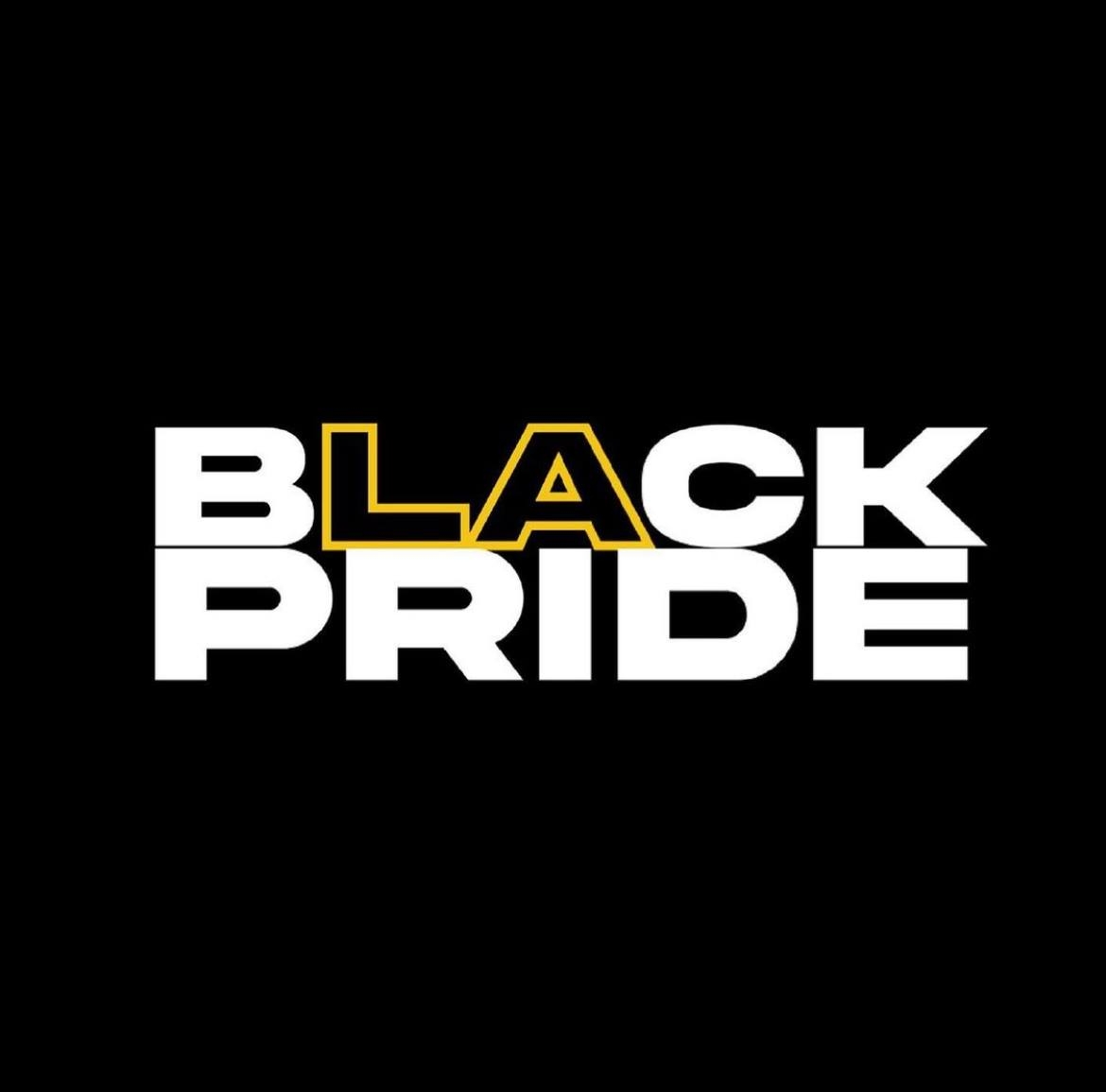
When most people think of Pride they more often than not relate it to parades parties. Far too many often forget that it is also a platform. Los Angeles Black Pride (LABP) isn’t just raising the flag. They are raising community consciousness at a time when white, mainstream aesthetic often enjoys borrowing from Black, queer culture without acknowledging the appropriation at hand. LABP does the work to flip the script.
This year, the celebration takes a bold economic stance. Visibility is cute, but viability pays the bills.
BLQ+MKT: Not Your Average Pop-Up
Enter BLQ+MKT, LABP’s unapologetically Black, queer vendor marketplace that’s one part business expo, one part cultural homecoming and all of the parts hustle. It’s not just about selling candles and tees, no matter how hard those candles do slap. It’s about building an ecosystem where Black LGBTQ entrepreneurs are seen and supported. This marketplace is not a low-key side attraction — it’s the main stage for economic empowerment.
By centering queer-owned brands, LABP is addressing a long-overdue market correction. Black LGBTQ folks represent a whopping $113 billion in spending power. That’s not just an audience, it’s a full-on economy. And yet, less than 10% of advertising content reflects this reality. BLQ+MKT says what the mainstream won’t — put some respect and revenue on our names.
Lakeyah: Headliner meets head-turner
Speaking of showstoppers, LABP will feature none other than Lakeyah – rapper, baddie, and blueprint for how queer-centered entertainment can drive community dollars. Her presence isn’t just a vibe, it’s part of a larger economic strategy. When you book talent that reflects the community, you do more than just fill seats. You circulate wealth, amplify voices, and make it very clear who this party is really for. She opens for Saucy Santana at this year’s Saturday night main event.
The Business of being seen
LABP is turning Pride into praxis. By shaping spaces where artistry and ownership meet, they’re shifting the focus from being seen to being paid — and paying it forward. This is about building power without waiting around for permission. Applause is adorable. Ownership changes everything.
Come for the music, the joy, the lewks that will leave zero crumbs. And while partaking in all of the Pride, take a closer look. Every booth at BLQ+MKT, every track Lakeyah drops, carries the architecture of a future rooted in Black queer autonomy. In LABP’s world, Pride isn’t solely a performance. It’s a goddamn power move.
To purchase tickets or for more information, head to http://losangelesblackpride.org/
a&e features
On the Fringe: Branden Lee Roth takes on Hollywood

Fresh off his performance in Bat Boy: The Musical, actor Branden Lee Roth is back onstage with yet another show — this time at the Hollywood Fringe Festival in. The show is not only a cabaret-style celebration of the composer’s lesser-known works, but also an opportunity for Roth to perform his powerful vocals and emotional depth.
Tomorrow, the show will have its last two showings at the Hollywood Fringe Festival at 2p.m. and at 10p.m.
“Bat Boy was one of the most challenging [shows] I’ve done — both physically and vocally,” said Roth. The story’s message stuck with him: a character on a profound journey of acceptance and belonging. With such a demanding role — and one carrying so much emotional weight — the pressure was on for Roth to deliver. To make matters more intense, he had little time to prepare.
“I had to jump into the role with minimal rehearsal time,”said Roth. “But the cast and crew were so supportive.”
As the show concluded, he described the performance as a show that will “stay with me forever.”
Now, audiences have yet another chance to see Roth perform — this time in a completely different musical world, but one with just as much passion. Lost & Found offers a rare glimpse into the deep cuts of Frank Wildhorn, the Broadway composer behind Jekyll & Hyde and The Scarlet Pimpernel. However, audiences shouldn’t expect the usual hits.
“The music itself will be something most audiences haven’t heard,” explained Roth. “The show is set up as a cabaret-style with a full band to back it up in an amazing venue.” And it’s not just the instruments or venue that shine.
Roth describes the vocals as “pretty epic.”
Set at The Cat’s Crawl, a speakeasy-style venue, Lost & Found embraces the stripped-down intimacy of cabaret. “Each song stands alonewith no scenes in between outside of some hosting.” It is evident that the opportunity to see Lost & Found live is a chance to really live in the music. There are no flashy sets or scenes between songs — it is purely storytelling through song.
This is Roth’s first time performing in the Hollywood Fringe Festival and he is fully embracing the experience. “The Fringe is an annual celebration of theatre in Hollywood. It’s a really awesome opportunity for creatives and artists to showcase their talents,” he said.
As an openly LGBTQ artist, Roth is no stranger to the challenges of navigating identity in a sometimes rigid or problematic industry. “Being part of the LGBTQ community and being in the arts hasn’t always been an easy journey.” He explains that it took him time to feel confident —specifically when pursuing roles that might not have identified with him. However, Roth recognizes that powerful stories transcend one’s personal identity.
“I start by finding where [a character and I] are similar and build from there.”
Roth encourages folks to get their tickets with only one day left.
“I think audiences are going to really enjoy themselves and leave humming a few new songs to themselves,” he said. You can watch Lost & Found: The Unsung World of Frank Wildhorn at The Cat’s Crawl during the Hollywood Fringe Festival. Tickets are available here, and fans can use the discount code BRANDEN at checkout. To keep up with Roth’s performances, follow him on Instagram at @brandenleeroth.
a&e features
A king rises in Vico Ortiz’s new solo show
With a little bit of ‘astrology woo-woo-ness, a little bit of magic woo-woo-ness, drag and fabulosity,’ they tether together the story of the relationship between them and their mother

Nonbinary, Puerto Rican icon, comedian, actor and activist, Vico Ortiz, 33, binds and weaves awkward childhood moments, family expectations, Walter Mercado and the love of their life embodied by a household mop, to tell the story of the rise of a king.
During the peak of Pride month, Ortiz gifted the Los Angeles queer and trans communities with a spectacularly queer, solo show featuring themself in their quest of self-discovery, a profound sense of connection and reconnection with their femininity and masculinity through growing pains and moments of doubt. This is a show that Ortiz describes as “wholesome, but burlesque.”
King Vico Ortiz rises
The show, which premiered on June 12, details Ortiz’s childhood, vignetting and transforming through their most formative years and through canon events that led them to their gay awakening, such as watching Disney’s Mulan (in Spanish) and the moment Ortiz cut their hair in honor of the scene where Mulan cuts hers off. Ortiz took the audience on a journey through their inner monologue during the moments in their childhood and into adulthood, where they not only come to terms with their identity, but also learn to understand the internal battle their parents went through as they watched their king rise.
Though Ortiz mostly only acted prior to writing and producing their first solo show, they finally took their opportunity to do things a little differently. Last June, their friend Nikki Levy, who runs a show called Don’t Tell My Mother, coached Ortiz to dredge up childhood memories and tether them in a way that could be told and understood by an audience as a show about queerness and self-discovery.
“[Levy] started asking me those questions that dig deeper into the emotional journey of the story, not just ‘hehe’ ‘haha’ moments, but there’s something a little deeper happening,” said Ortiz in an interview with the L.A. Blade. This is when they asked Levy to help coach them through the process of putting the story together in a way that Ortiz imagined it, but also in a way that made sense to the audience.
Ortiz says that with a little bit of ‘astrology woo-woo-ness, a little bit of magic woo-woo-ness, drag and fabulosity,’ they tether together the story of the relationship between them and their mother.
“Astrology had a huge influence in my life growing up from the get-go,” said Ortiz. “I was born and [my mother] printed my birth chart.” The Libra sun, Sagittarius rising, Scorpio moon and Venus in Virgo, says they have always known their chart and that not only did astrology play a huge role in their life growing up, but so did astrologer-to-the-stars Walter Mercado.
The solo was partly influenced by their mother and partly influenced by the iconic, queer, androgynously-elegant Mercado, who famously appeared on TV screens across homes in Latin America and the United States for a segment on that day’s astrological reading.
Seeing Mercado on that daily segment shaped Ortiz’s view of gender and began to understand themselves in a new-found light — one in which they saw their most authentic self.
“Seeing that this person is loved and worshipped by all these people who are like: ‘we don’t care that Walter looks like Walter, we just love Walter,’” said Ortiz. This is when they realized that they too, wanted to be loved and adored by the masses, all while fully embracing their masculinity and femininity.
Closing Night of ‘Rise of a King’
The closing night show of ‘Rise of a King’ was a reminder of how unpredictable life can be and how darkness comes in on some of our brightest moments. Ortiz brilliantly pulled off an improv monologue during a 15-minute power outage. Though it was unpredictable, it was on theme. Ortiz owned the stage, going on about childhood memories that shaped them into who they are today and how they have reconnected with the imaginative child that once told the story of a half-butterfly, half-fish.
The rest of the show went according to plan, immersing the audience in a show that took us straight into the closet of Ortiz’s parents and where Ortiz not only discovered, but learned to embrace who they truly are — to the first moments they embraced the king within and outwardly began to show it to audiences, and eventually their mother.
The set, designed by Jose Matias, functioned as a walk-in closet that transforms throughout the show against the backdrop of drawings of Ortiz and their family memories projected on a big screen on the stage.
Ortiz’s original, solo-show had its world premiere at FUERZAfest in New York City, then its west coast premiere at L.A.’s own Hollywood Fringe Festival.
Follow @puertoricanninja for more updates on their upcoming work.
a&e features
Los Angeles Black Pride: Where trailblazers get their flowers and the next generation gets the blueprint
If you’re looking for receipts, meet three creatives whose glow-up journeys began with LABP and have not lost momentum since

Let’s get one thing straight… or should I say, gay. At Los Angeles Black Pride (LABP), queerness shines brighter than the glitter under the spotlight and struts fiercer than any size 11 stilettos. LABP has long been the beating pulse of Black queer excellence in the City of queer Angels, not just a party but a proving ground. A space where legends are honored, careers are catapulted, and chosen family comes together.
This year’s theme, Legacy & Leadership in Action, is not another Pride month mantra. It’s a whole mood. It serves a reminder that we will not stand idly and wait for our recognition. We create it. And if you’re looking for receipts, meet three creatives whose glow-up journeys began with LABP and have not lost momentum since.
Before they were booked and busy, they participated in Los Angeles Black Pride, a place where Black queer excellence rises, where glam meets grit and where legends are born.
Ebony Lane – Beating Faces and Breaking Barriers
You know when someone walks into a room and suddenly everyone checks their posture? The person walking into that room is Ebony Lane. A Trans make-up artist (MUA) whose brushes do more than blend — they command. Lane’s artistry is lush, precise, and glistening with resilience. She’s made her name crafting unforgettable looks for film, fashion and fierce femmes who command the world’s attention.
But before the gigs, the gloss and the gag-worthy lewks, there was LABP, a space where Lane Lane found alignment between her artistry and her identity. As a longtime fixture in the Crenshaw beauty scene and a pioneer in L.A.’s ballroom and pageant community, Lane has used her platform to uplift young Black and trans folks by encouraging them to carry themselves boldly in their own truth. Her presence at LABP was never just about beauty but visibility and leadership. Today, Lane doesn’t just beat faces, she beats the odds flawlessly.
Berkley The Artist – The Soundtrack to the Revolution
Grammy-nominated and gloriously ground-breaking, Berkley The Artist is proof that soul hits differently when it’s sung with purpose. Blending funk, truth, and a whole lot of Black queer excellence, Berkley’s music is equal parts hype and healing. Before the world heard his music, LABP passed him the mic.
As a performer who’s graced both intimate community stages and major music platforms, his rise in the music industry is deeply intertwined with spaces like LABP, that amplify Black queer expression. His artistry both entertains and empowers. Whether through healing lyrics or community-centered collabs, his work is a love letter to liberation.
KJ – The Lens That Loves Us Back
Some people take pictures. KJ tells stories with a camera. The creative force behind My Black Is Gold, KJ’s photography turns everyday Black queer life into poetry for the eyes. His work feels like a love letter and a clapback all in one — soft and defiant all at the same time.
He first learned to capture folks in their full power at LABP.His work, now featured in exhibitions, digital campaigns and community projects, centers the intersection of softness and strength that is so signature to Black queer life. LABP provides a creative ecosystem where self-definition thrives.
These artists are proof that LABP doesn’t just celebrate Pride but cultivates legacy. It’s a space where Black queer brilliance isn’t just exhibited but elevated. It’s where identity and artistry work together. From makeup chairs to music stages, the impact of LABP is alive in every brushstroke, every beat, and every shot. As we honor these artists and uplift the next generation, one thing is clear — the future is Black, the future is queer, and at Los Angeles Black Pride, it is beautifully unstoppable.
a&e features
Cumbiatón returns to Los Angeles right in time for Pride season
‘Que viva la joteria,’ translates roughly to “Let the gayness live”

Healing and uplifting communities through music and unity is the foundation of this event space created by Zacil “DJ Sizzle Fantastic” Pech and Norma “Normz La Oaxaqueña” Fajardo.
For nearly a decade DJ Sizzle has built a reputation in the queer POC and Spanish-speaking undocumented communities for making the space for them to come together to celebrate their culture and partake in the ultimate act of resistance — joy.
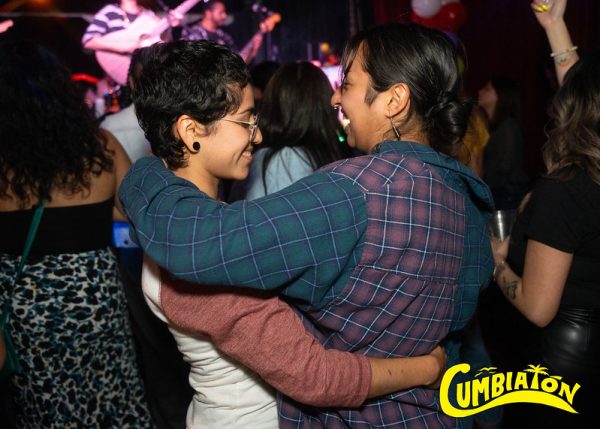
Couples, companions, comadres all dance together on the dancefloor at Cumbiatón. (Photo courtesy of Cumbiatón).
Cumbiatón was created during the first Trump administration as a direct response to the erasure, racism, homophobia and xenophobia that was engrained into the administration’s mission for those first four years. Now that the second Trump administration is upon us, the racism, homophobia, transphobia and xenophobia are tenfold.
This event space is a ‘party for the hood, by the hood.’ It is led by women, queer and trans people of color in every aspect of the production process.
The recent fires that burned through Altadena and Pacific Palisades made DJ Sizzle decide to step back from marketing the event in Los Angeles, an area where people had just lost their businesses, homes and where their lives were completely thrown for a loop.
Now they’re back, doubling-down on their mission to bring cumbias, corridos and all the music many of us grew up listening to, to places that are accessible and safe for our communities.
“I started Cumbiatón back in 2016, right after the election — which was weirdly similar because we’re going through it again. And a lot of us come from the Deferred Action for Childhood Arrivals (DACA) movement. We were the ones to really push for that to happen along with the DREAM Act.”
DJ Sizzle says that she wanted to create a space out on the streets to celebrate life and come together, because of how mentally and physically taxing it is to be a part of the marginalized communities that were and still are, a major target for ongoing political attacks.
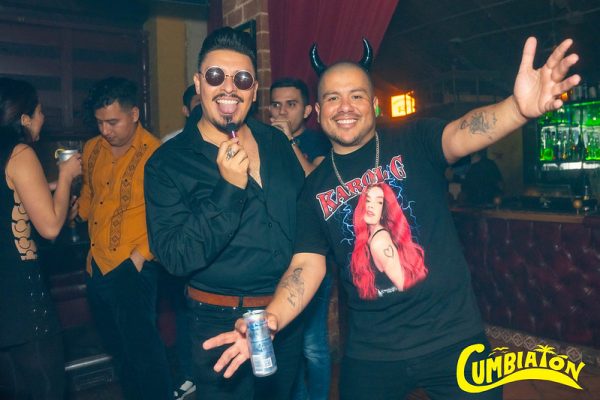
Edwin Soto and Julio Salgado pose for a photo at a Cumbiaton event in 2024. (Photo courtesy of Cumbiatón).
“We need these spaces so that we can kind of refuel and rejoice in each other’s existence,” said DJ Sizzle. “Because we saw each other out on the street a lot, but never did we really have time to sit down, have a drink, talk, laugh. So I found that music was the way to bring people together and that’s how Cumbiatón got started. It was honestly like a movement of political resistance through music.”
DJ Sizzle is an undocumented community organizer who aims to not only bring awareness to the issues that her communities face, but also to make space to celebrate the wins and bond over the music that brings people in Latin America, East L.A., Boyle Heights and the Bay area together.
Julio Salgado, a queer, visionary artist and migrant rights activist from Ensenada, Baja California with roots in Long Beach and the Bay Area, connected with DJ Sizzle over their shared passion in advocating for immigrant rights.
“Cumbiatón was created during the first [Trump] administration, where you know, a lot of people were really bummed out and so what Sizzle wanted to create was a place where people could come together and celebrate ourselves,” said Salgado. “Fast-forward to the second [Trump] administration and we’re here and feel a little bit more like: ‘oh shit, things are bad again.’ But, things have always been bad.”
Salgado is involved with Cumbiatón through his art. He is a mixed-media artist who creates cartoons using his lived experience with his sobriety journey, undocumented status and queer identity.
With a background in journalism from California State University, Long Beach, Salgado documents what activists do in the undocumented spaces he has been a part of throughout his life.
In 2017, Salgado moved back to Long Beach from the Bay Area, and at the time he started doing political artwork and posters for protests against the first Trump administration, but because the nature of that work can be very tiring, he says that he turned to a more uplifting version of his art where he also draws the joy and unity in his communities.
When he and Sizzle linked up to collaborate during that time, he thought he could use his skills to help uplift this brand and bring it to the forefront of the many events that saturate the party landscape.
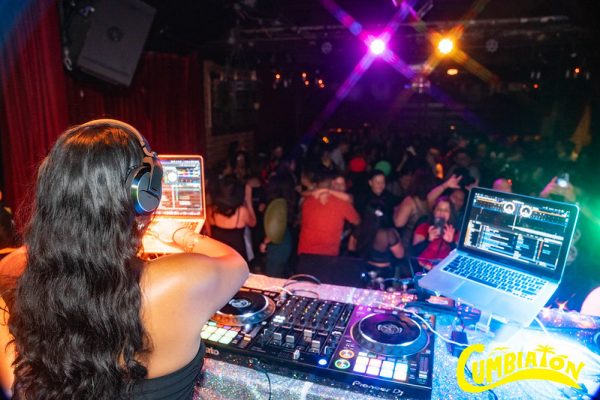
DJ Sizzle doing her thing on stage, giving the crowd the music they went looking for. (Photo courtesy of Cumbiatón).
“We are familiar with using the dance floor as a way to kind of put the trauma a little bit away just for one night, get together and completely forget,” said Salgado.
Coming from an undocumented background, Salgado and Sizzle say that their experience with their legal status has made them very aware of how to go about the ID-check process at the door for their events.
“When you’re undocumented, you have something called a [High Security Consular Registration (HSCR)] and it’s kind of like your ID and many of these heterosexual clubs would see that and say it was fake,” said Salgado. “But at the gay club, they didn’t care.”
Just being conscious of what that form of ID looks like and knowing that it’s not fake, helps many of the hundreds of people who come through for Cumbiatón, feel just slightly more at ease.
Edwin Soto, who is another community activist and leader in the undocu-queer community, is also involved in the planning and organizing of the event.
In the long journey of making Cumbiatón what it is now, they say that they have all been very intentional about who they bring in, making sure that whoever they are, they also understand the experience of being undocumented and accepted anyway.
“Something that Sizzle and the team have been very intentional about is making sure that [the security at the door] knows that someone might be using their consulate card,” said Soto.
Bringing together this event space is no easy task, considering the fact that their events are deeply thought out, intentional and inclusive of not just people of color, but also people with differing abilities and people who do not reflect the norm in West Hollywood clubs.
“We created the space that we were longing for that we did not see in West Hollywood,” he said. “[Cumbiatón] is what life could really be like. Where women are not harassed by men. Where people are not body-shamed for what they’re wearing.”
When it comes to their lives outside of Cumbiatón and partying, Sizzle says that it does get exhausting and planning the event gets overwhelming.
“It is really difficult, I’m not going to lie,” said DJ Sizzle. “We are at a disadvantage being queer and being undocumented because this administration triggers us to a point that, anyone who is not a part of those identities or marginalized communities would ever be able to understand,” said Sizzle. “There are times where I’m just like: ‘I’m going to cocoon for a little bit’ and then that affects the marketing and the communication.”
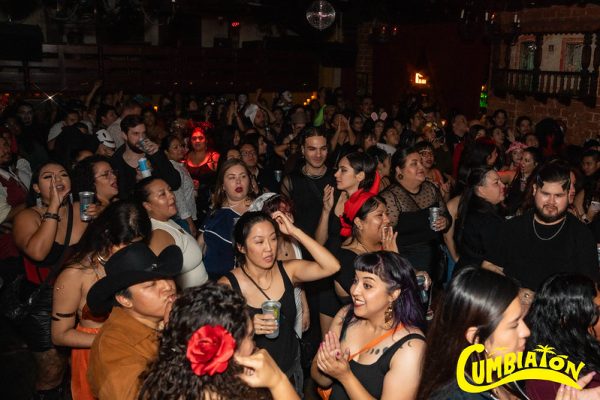
Usually, the events bring in hundreds of people who are looking for community, safety and inclusion. (Photo courtesy of Cumbiatón).
That’s a little bit about what goes on behind the scenes — which really shouldn’t come as a surprise for anyone who is out there fighting for basic human rights, while also making the space to party and enjoy themselves.
“I’m really trying to find balance and honestly my life raft are my friends and my community,” she said. “Like, being able to share, being able to have this plática, and be like ‘bitch, I see you and I know its fucked up, but we got each other.’”
Cumbiatón was made with the purpose of making space to include and invite the many different people in these communities who are otherwise sidelined in broader conversations and in party scenes where they are not as inclusive or thoughtful about their attendees.
“How beautiful is it to be queer and listen to rancheras and to norteñas and cumbia, and to just own it,” said Soto.
To join Cumbiatón at their next party, visit their Instagram page.
a&e features
Best of LGBTQ+ LA 2025
Los Angeles Blade honors the best of the city as selected by our readers
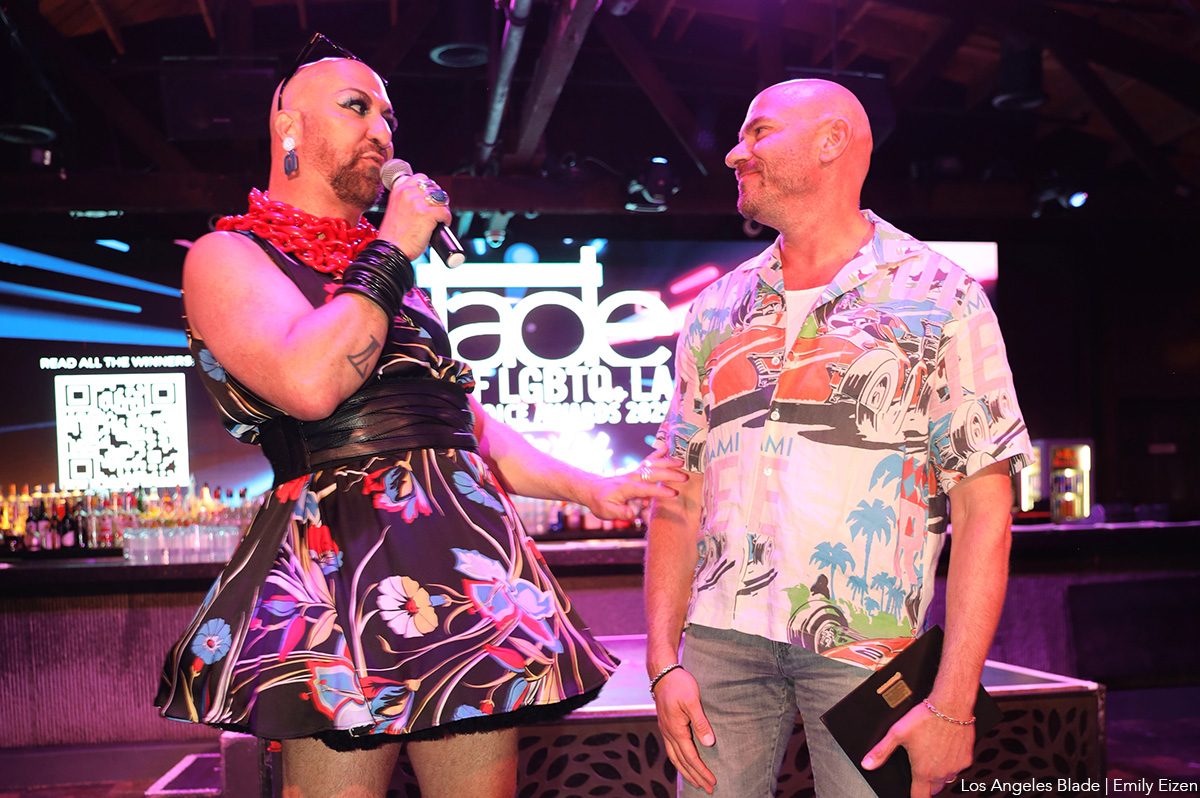
The Los Angeles Blade celebrated its eighth annual Best of LGBTQ+ LA Awards with a spectacular show at The Abbey in West Hollywood on May 22, honoring the community’s best and brightest as selected by you, our readers.
The Awards honored our favorite bars, businesses, artists, organizations, and leaders and featured performances by drag queen Cake Moss, musicians Prince Joshua – who took home the awards for Local Musical Artist of the Year and Go-Go of the Year – and Robert Rene, comedian Allison Reese, and West Hollywood poet laureate Brian Sonia-Wallace. Drag artist Billy Francesca and LA Blade publisher Alexander Rodriguez emceed the event.
“We here in LA are excited to reflect our community, so tonight we’re honoring politicians, business owners, nightlife, entertainment, social media, and Billy,” Rodriguez said, opening the show.
One of the biggest winners of the night was queer mogul and “CEO of Everything Gay” Tristan Schukraft, who won LGBTQ Professional of the Year, while the bar he now owns, The Abbey, took Best LGBTQ Bar, and his pharmaceutical-delivery company MISTR took Best LGBTQ-owned business.
“I’m motivated by making change. We have a purpose, and queer entrepreneurs are building a community that makes a difference,” Schukraft said.
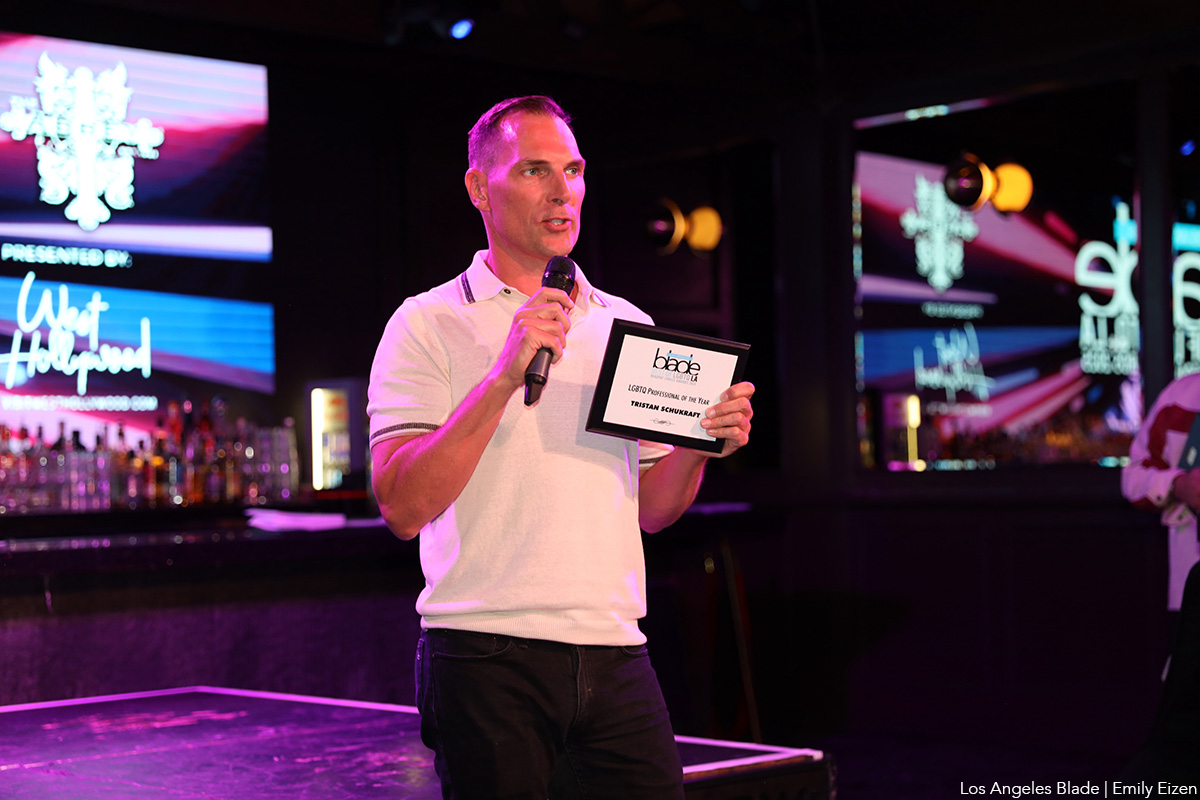
Drag artist and activist Pickle, who runs the LA chapter of Drag Story Hour and is West Hollywood’s first drag laureate, gave a moving speech after she was awarded the Local Hero Award, in which she encouraged anyone who’s facing distress to persevere through the darkness.
“Sometimes, just holding on for one more day is all you can do, but that is strength, and you are loved,” she said.
Transgender rights activist, model, and Blade contributor Rose Montoya was honored as Activist of the Year and Influencer of the Year, although she was unable to attend the ceremony.
“This recognition means more than she can express,” said her brother, Prince Joshua, accepting the award on her behalf. “Activism has never been a choice for her. It’s been a necessity. As a trans person, as a person who exists at the intersection of multiple identities, she’s had to fight not just for visibility, but for dignity, safety, and the right to exist. This work is personal. And in a time where hatred is getting louder, in our laws, in our schools, and in our streets, we don’t have the luxury of staying silent.”
Weho Pride notched two wins during the ceremony, including Best Regional Pride and Best LGBTQ Event for its OutLoud Music Festival, which kick off next week.
“We have a big week ahead and hopefully we’ll see you there because Pride starts here, and Pride starts now,” said Jeff Consoletti, Producer of Weho Pride, accepting the award.
The Gay Men’s Chorus of Los Angeles won the award for Best LGBTQ Social Group,
“The Gay Men’s Chorus of LA has been lifting our spirits through song and fighting for community and singing for all our causes since 1979,” said GMCLA Executive Director Lou Spisto, accepting the award. He also noted that the Chorus will honor Schukraft with its Voice Award at its upcoming Dancing Queens Gala June 21 at the Saban Theatre.
Trans Lifeline was awarded Non-Profit of the Year, likely a recognition of the organization’s importance as trans people have come under increasing attack across the country.
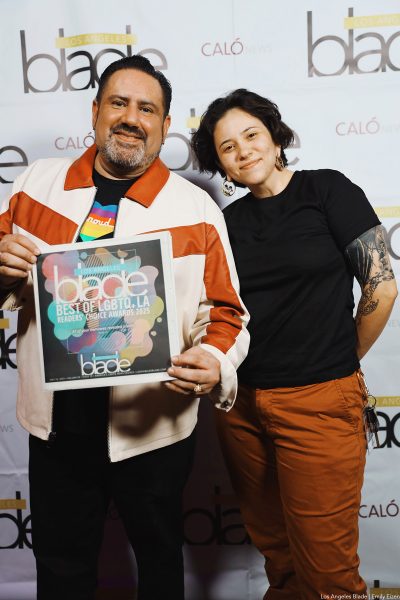
“They’ve received an increase in calls to the tune of 300%, so support your trans brothers and sisters,” Rodriguez said, announcing the award.
DJ Cazwell took home the award for best DJ, although a little mix-up had his award read Best Cannabis Retailer, a distinction that actually went to Green Qween. Cazwell spoke about how much he appreciates the community he found after moving to LA from New York.
“I moved here from New York nine years ago and I found a community of DJs who actually support each other here, so I want to shout out the other nominees,” Cazwell said.
That’s a sentiment that was echoed by Best Bartender winner Sumner Mormeneo from Beaches, who moved to LA from Florida.
“My first six months living here was rough. It wasn’t until I got a job at a bar in Weho that it started feeling like home, so thank you,” Mormeneo said.
More than 40 awards were given out in this year’s Best of LGBTQ+ LA. See the complete list of winners.
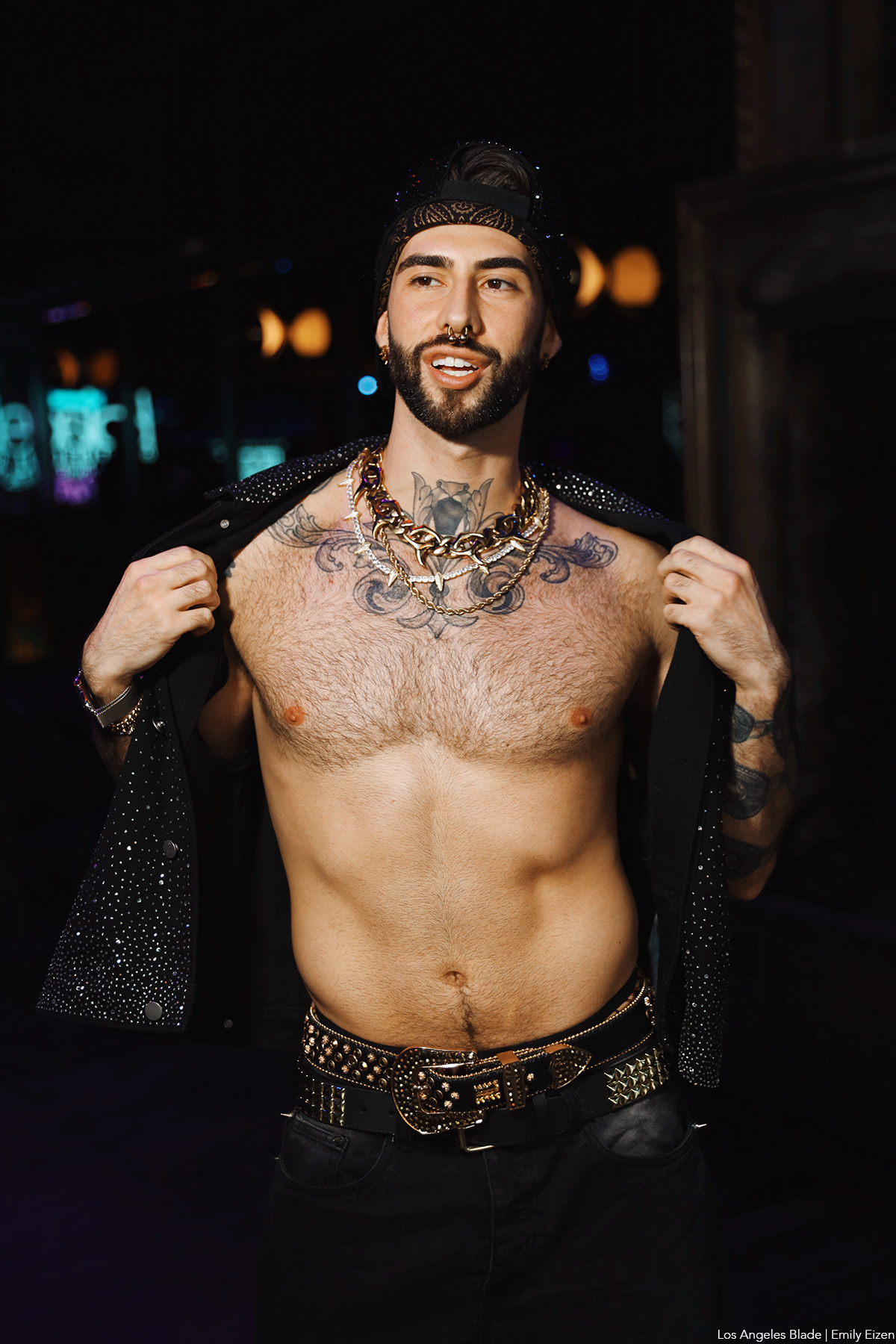
-
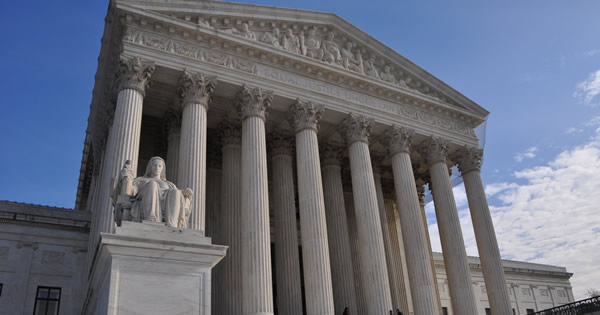
 Commentary3 days ago
Commentary3 days agoThe Supreme Court’s ‘Don’t Read Gay’ ruling
-
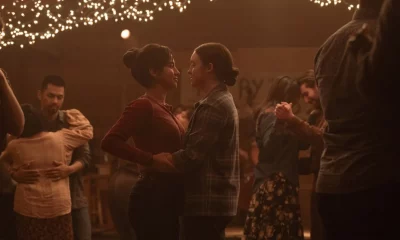
 Arts & Entertainment2 days ago
Arts & Entertainment2 days ago2025 Emmy nominations: ‘Hacks’ and ‘The Last of Us’ bring queer excellence to the table
-
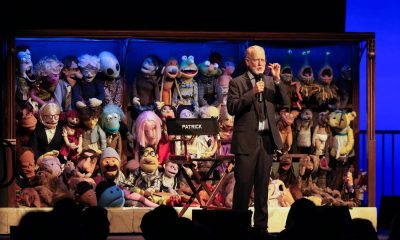
 a&e features3 days ago
a&e features3 days agoThe art of controlled chaos: Patrick Bristow brings the Puppets to life
-
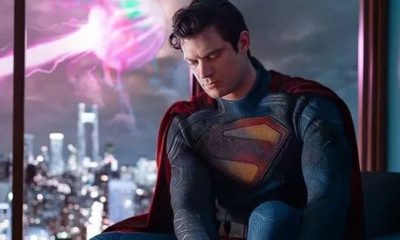
 Movies2 days ago
Movies2 days ago‘Superman’ is here to to save us, despite MAGA backlash
-
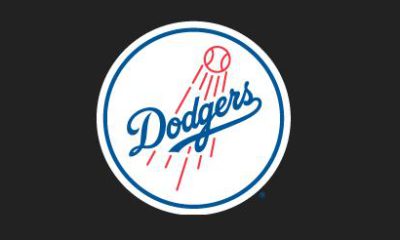
 Sports2 days ago
Sports2 days agoHololive and Dodgers create a home for queer fandom
-

 News1 day ago
News1 day agoWest Hollywood to advance protections for diverse and non-nuclear families
-

 Events1 day ago
Events1 day agoLos Angeles Blade to take special part in NLGJA Los Angeles inaugural journalism awards

